Spring 2007 SST Unit in Cambodia
The Spring 2007 unit has returned, but we'll leave the pictures and stories here
Mon, 11 Dec 2006Graber Millers settling into Phnom Penh After the 37-hour journey from Goshen to Cambodia, the five Graber Millers arrived Tuesday noon in Phnom Penh, made their way through immigration and customs, and headed to the Mennonite Central Committee house. With relative success, we've completely reversed our days and nights, with Cambodia being exactly 12 hours ahead of Goshen.
Most of this week has been committed to the details of daily living -- making arrangements for our meals (mostly Cambodian and Thai food), purchasing a cell phone, meeting with the owners of the house we'll be renting, visiting the school where the kids will be attending, checking out what books are available for SSTers in the Russian Market, keeping our children entertained. Next week work will begin in earnest on completing the academic schedule and syllabus for SSTers, meeting with medical personnel to make arrangements for student health care needs, confirming arrangements for Khmer language training, meeting families with whom students will live, arranging for bus services we'll need for the group.
Keith began daily private language tutoring 18 hours after we hit the ground, and is enjoying applying greetings and sentences with Cambodians. While riding in a tuk-tuk last evening, 7-year-old Simon said the one phrase he's learned (through overhearing) thus far is "dtou trang," which means "go straight."
Saturday we'll move into the longer-term Goshen house, which is about a five-minute tuk-tuk ride from the MCC house, near Tuol Sleng (S-21 prison) and the Russian Market (P'saa Toul Tom Pong). See the orange-tiled rooftop in the center of the photo from Google Earth. MCC country representatives Larry and Sherry Groff and their children Tyler and Nicole also are treating us to a pancake breakfast at their home Saturday morning. There we'll also meet Sreyhem Roberts, who will be our assistant for the SST program. Sreyhem is a Cambodian married to a former Mennonite Central Committee worker, and she's been working throughout the fall to find 24 homes for students.
We'll post updates on the SST Cambodia blog, once it is up and running, every few days, and you are welcome to sign up to receive regular update notices if you would like. Cambodia promises to be an excellent location for the newest SST setting.
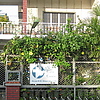

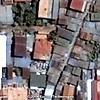
Sun, 17 Dec 2006
Finding Our Way in Phnom Penh Ann and Keith, Niles, Mia, and Simon continued settling in over the last week, having a host of meetings, running errands all over Phnom Penh, and visiting many students' host family homes (see next entry on that). Niles had his photo taken with a Cambodian Santa at a local restaurant. Even though more than 90 percent of Cambodians practice Theravada Buddhism, we see Christmas trees around town from time to time.
We spent a morning with Larry and Sherry Groff, MCC Country Directors, as well as the Cambodia SST assistant, Sreyhem Roberts, Sreyhem's husband Mike, and the father of Goshen College students Travis and Nicole Weaver, who was visiting from the States while on business. We also spent an afternoon and evening with Sreyhem, Mike, and their three children, swinging on their backyard swings out in the countryside just beyond the borders of Phnom Penh.
At the Groff house (the Groffs are the aunt and uncle of SSTer Abigail Groff), Niles, Mia, and Simon enjoyed meeting Tyler and Nicole's monkey and goat, as well as jumping on the family trampoline with Tyler and Nicole and Sreyhem and Mike's three children, Andrew, Aaron, and Alaina.
We continue to find our way around town in tuk-tuks (Simon is in a tuk-tuk in the photo here), and occasionally Keith takes motos when doing business. In the photos above you also can see the view from our porch to the porches of neighbors across the street as well as the street we live on.
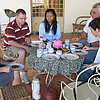
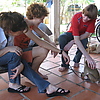
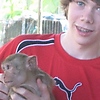
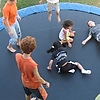

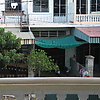
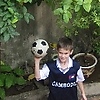
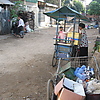


Meeting Students' Host Families Keith and Ann spent all of Saturday morning and part of the afternoon driving around Phnom Penh with Sreyhem, our Cambodia SST assistant, meeting the families that Sreyhem had secured over the last several months. Students will have quite gracious Cambodian parenting, from what we could see in our encounters with host mothers, fathers, and siblings.
In most of the host families, parents will not speak English, though older siblings may speak a good bit of English since Cambodians now study English in school. Of the Cambodian homes we visited, some have a total of two rooms and some have five or six rooms in the house. Some are on busy streets while others have a countryside, neighborhood feel. Several host families run their own businesses from the front of their homes, including small grocery markets, a construction materials business, and a hair salon.
The photos are of the following families and homes, in this order: 1) Neighborhood of host family Lay Sary and Jiang Sareoun; 2) Lay Sary and Jiang Sareoun in front of their home; 3) Tea Savvat and her daughter in their home near the Russian Market and the Graber Miller house; 4) the outside of Tea Savvat's home; 5) Sam and Yanna Ang with their family in front of the Christmas tree; 6) the street in the Ang's neighborhood; 7) the kitchen in the home of Ngin Sarin; 8) Madame Vorn and her family, who have been long-time friends of Sreyhem; the outside of Madame Vorn's home and market; 9) the market in front of Madame Vorn's home; 10) the home of host parents Sam Vuthy and Tuy Sam Oy; 11)the Men Vanthorn home with the host mother outside of her hair salon; 12) home of Meng Hy and Lim Kay, which is directly across from their Meng Hy Restaurant, a favorite breakfast spot.
Students have not yet been placed in specific homes, but the Graber Millers will be making placements sometime in the weeks before SSTers arrive January 12. All in all, Cambodia continues to look like an excellent location for SST, with welcoming, gracious hosts and a stimulating and challenging environment for language and cultural learning. 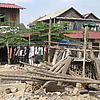
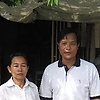
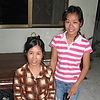
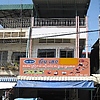
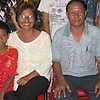
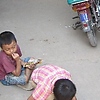
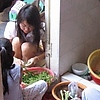
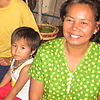
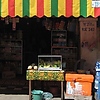
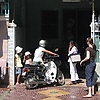
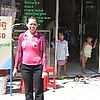
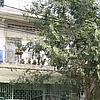
Wed, 20 Dec 2006
Visiting More Family Homes Thursday the Graber Millers are headed off to Angkor Wat, the magnificent Hindu and Buddhist temples built during the height of the Khmer/Cambodian reign some eight centuries ago, to celebrate the Christmas holidays and Niles' 15th birthday. We'll be accompanied by Ann's sister and brother-in-law, Susan and Mike Hunsberger, and their daughter Evelyn, who are visiting from Bulgaria. We'll spend a day visiting the temples (see photo of Keith attempting, unsuccessfully, to mimic the smile of the faces of the Bayon temple during his trip to Angkor Wat this summer) and then also visit a silk factory and possibly the floating villages of Tonle Sap River.
Wednesday we visited Tuol Sleng, the S-21 prison where thousands of political prisoners were tortured before being taken to the Killing Fields outside the city to meet their fate. The prison was used during the Khmer Rouge period from 1975 to 1979, and now stands, almost untouched, as a memorial to the victims of that tragic part of Cambodian history. Next week we'll also take a pilgrimage to the Killing Fields themselves.
Keith visited the Royal University of Phnom Penh campus this week to confirm Khmer language arrangements and take note of typical Cambodian students' clothing on campus (see photos). Students will be divided into four language groups and continue the study they began this fall in a course videoconferenced to campus from our teacher, Susie Kaufmann, who was based in Chicago.
We also finished visiting and GPS-mapping students' host family homes. A few of the homes are pictured here: 1) the home of tailor Nov Kuch and family; 2) the second- and third-floor home of Leav Sinara and Saeng Lee, near P'saa Thmei; 3) the brother of Chhoy Socheata near their home, which is not far from the Royal University of Phnom Penh; and 4) the bedroom one of the women SSTers will share with her host sister. Most of the women in the SST group will either share a bed with a sister or sleep on a bamboo mat on the floor. Most of the men in the group will sleep on bamboo mats or, in a couple of cases, in a bed. Of the families, more than half are Buddhist, while a smaller number are Christian or non-religious.
In other photos here, you can get a view of Phnom Penh from the top of the Sorya Mall, located in the downtown area; view the market where we purchase eggs just down our street, and observe Niles and Simon as Niles creates a Gumby creature out of the garnish for one of our meals. We anxiously await the arrival of the SSTers. Blessings to all over the Christmas holidays.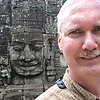
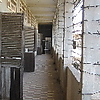
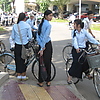
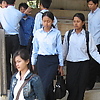
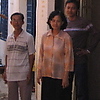
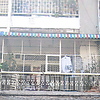
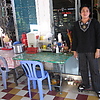
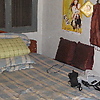
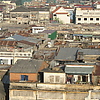
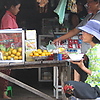
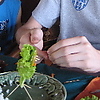
Sun, 31 Dec 2006
Traveling to Siem Reap and Angkor Wat Just before Christmas Ann, Keith, Niles, Mia and Simon traveled to Siem Reap, a five-hour-drive north of Phnom Penh, to see the ancient temple sites of Angkor Wat. Ann's sister and brother-in law, Susan Graber Hunsberger and Mike Hunsberger, and their daughter Evelyn, made the trek with us, having traveled from Bulgaria to be with us for the holidays.
On the way to Siem Reap, we made a quick stop in Skuon, affectionately known as Spiderville, where the locals sometimes eat spiders for breakfast, lunch, and dinner. On his 15th birthday, Niles had his first taste of a deep-fried tarantula leg, as did his Dad (tasted a little like a burnt french fry). The origin of the spider culinary practice is unknown, but is believed to be traced back to the Khmer Rouge period (1975-1979) when food sources were scarce. Since Simon and Mia spent the entire Skuon sidetrip huddled in the back of our van, we made the visit a short one.
On our day at Angkor Wat, we saw the key temple sites -- Angkor Wat itself, built by Suryavarman II (reign, 1112-1152); Angkor Thom, built by Angkor's greatest king, Jayavarman VII (reign, 1181-1219); Bayon, which carries the face of Jayavarman VII on 216 enormous, smiling faces; and Ta Prohm, which figures as an essential backdrop in Angelina Jolie's film "Tomb Raiders," with massive trees growing into and slowly destroying the structure, which also dates back to Jayavarman VII's reign.
Pictured here, besides the tarantulas in their live and deep-fried forms, are: our family outside of Angkor Wat; the kids climbing to the highest tower of Angkor Wat up a 70-degree stone staircase; Evelyn and Mia in the tower; Simon at both Ta Prohm and Bayon; a fruit seller on the temple grounds, examining her colorful produce; and the kids feeding wild monkeys just outside the Bayon temple.
During the Siem Reap week we had a cold wave, with temperatures sometimes in the 70s at night and in the low 80s during the day. The heat is cranking back up now, so it appears winter is over, though the timing was perfect for trudging through the temple grounds. When students take the trip to Siem Reap and Angkor Wat, they'll be able to choose which temples they visit, and will use either bike, moto, tuk-tuk, or bus transportation.
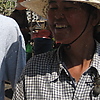
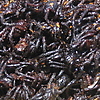

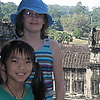


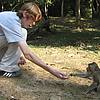
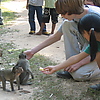

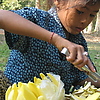
The Kampong Phluk Adventure The day after visiting Angkor Wat, somewhat on a whim, we decided to take a shot at visiting Kampong Phluk, one of the villages on 20-foot stilts over the Tonle Sap Lake, looking much like a set from a movie. The floating village of Chong Kneas also was an attractive option, but our guidebooks said it was often over-touristed, and this was high season. So we chose to take the road -- and the waterway -- less traveled.
We took our van as far as we could go, some 10 or 12 kilometers down dusty, bumpy roads, as far as vehicles can go. From there on our encounters were all in Khmer. After negotiating a deal, we crawled onto the back of five motos and drove another four kilometers down sandy trails impassible to anything with more than two wheels. From there we hopped a boat, then traveled another four or five kilometers down a tree and shrub-covered canal to the rather amazing village of Kampong Phluk, majestically rising out of the Tonle Sap. In our various travels in Asia, Latin America, and Eastern Europe, this was perhaps the single most otherworldly experience.
People in Kampong Phluk are, not surprisingly, primarily involved in fishing. They also raise crocodiles (see photo of caged crocodiles), feeding them tens of thousands of river snakes each year. Creative living is evident everywhere, from the floating pig stys, which provide fecal food for the fish that swim below; to the small floating vegetable gardens that offer shade for fish, which are then caught in traps along the gardens' edges; to bathing and brushing teeth from the edge of a carved-out wooden boat.
We took a walk through the three or four acres of the community's dry land available during this season. There we saw merchants chatting and a woman drying tiny shrimp destined for the markets. Keith visited the village's small school and spoke with the monk who was teaching there. We were able to arrange for two or three SST students to live in the village for their service assignments, teaching English, forming relationships, and walking (and boating) alongside the villagers in other ways.
When the SST group visits Siem Reap, we'll also take a side trip to Kampong Phluk, which by then will have more land and less water. This was an extraordinary adventure, and we hope it will be for the group as well.
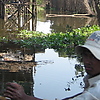
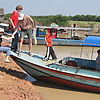
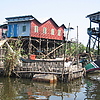
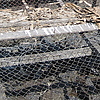
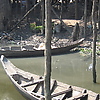
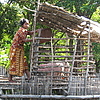
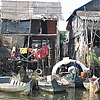
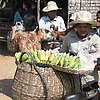
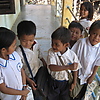
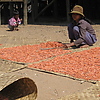
Christmas with MCCers, the South Coast, and the Killing Fields (This evening we posted three separate blog entries about our travels over the last week, so please go to the two previous ones as well. Thanks.)
We spent Christmas Day sharing turkey with Mennonite Central Committee workers at the home of country directors Sherry and Larry Groff, who have been tremendously helpful consultants to our SST program. The meal included turkey, mashed potatoes, dressing, and pumpkin and apple pies, all rarities in Cambodia.
After Christmas we spent a couple of days on the south coast, visiting Kaep and Sihanoukville. On one of the days we were staying at Kaep, we boated out to Rabbit Island for an afternoon at the beach. The kids enjoyed playing in the sand, dipping their toes in the waters of the Gulf of Thailand, and flying kites. The adults delighted in excellent fish, squid, and prawns, straight from the sea, cooked over a fire in the shanty behind us. All in all, aside from Niles' slicing his toe on a rock during our initial 15 minutes on the island, it was a well-spent, relaxing day. We hope to send three students to the island for their village study (not service, but a weekend village study), learning about the lives of the 20 Cambodian families who live on the island and serve travelers who come to eat or to stay overnight in the beach shacks.
On our various travels, we took photos of country homes, attempting to depict what village living may be like for students on service. Here are images of two typical country homes as well as an outdoor barber shop.
We returned from the south coast to find a Buddhist funeral happening on our street. We've seen hosts of funerals and weddings over the last two weeks. During each a canopy is set up covering half of the street in front of the wedding or funeral residence, loudspeakers play music or Buddhist chanting, and an outdoor kitchen serves food to those celebrating or memorializing the event. In the case of our neighbor's funeral, professional drum players and gong-bangers were employed until late in the evening and then again at 5:15 the next morning, making for a memorable event.
We also took a tuk-tuk to visit Choeng Ek (the Killing Fields), where about 18,000 Cambodians were killed during the Khmer Rouge period (1975-1979). Those killed at the Killing Fields, located about 10 kilometers outside of town, were first held at the S-21 prison just four blocks from our home here in Phnom Penh. The visit was a sobering one, with excavated mass burial pits, bones still being unearthed, and a stupa (Buddhist funerary structure) with some 9,000 skulls layered on shelves. The Killing Fields will be the site for one of our SST field trips as well.
We look forward to our students' arrival in 12 days, and are busy making final preparations -- formally placing particular students with host families; meeting with host parents for an orientation session; arranging for buses to move us about the city on our initial days; preparing the syllabus; finalizing the academic schedule for the first six weeks; confirming our various lecturers; preparing orientation packets for students; and picking up mosquito nets and other essentials. For their initial four days in the city, students will take tuk-tuks from place to place, and then make decisions about their choice of transportation. We'll purchase bicycles and helmets for those who need them, and make sure everyone is appropriately prepared for Phnom Penh traffic patterns, which we've grown to love but which are radically different than what we are used to in the U.S. and Canada. It's all good.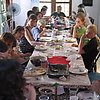
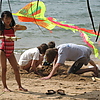
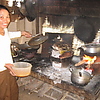
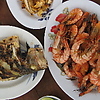

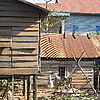
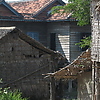
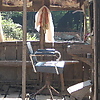
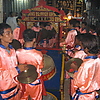
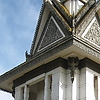
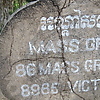
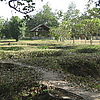
Mon, 8 Jan 2007
Meet the Parents Tonight (Monday) we had an orientation meeting with all of the host families, and more than 30 parents and siblings came. We were grateful for Sreyhem's language and cultural abilities in translating detailed information about our program and our hopes and expectations for host families. Most families have never before hosted Westerners, and most parents speak no or minimal English. The meeting had a positive mood and spirit, with families pleased to see photos of and learn about their U.S. or Canadian kohn proh or kohn srey. Mia and Simon spent the evening serving drinks and snacks to our guests.
Parents will pick students up at our hotel at 5 p.m. Saturday, just after we complete a morning orientation and afternoon bus tour around key spots in Phnom Penh.
Most of the past week has been focused on finalizing the academic schedule and syllabus. This semester's SSTs in Dominican Republic and Cambodia will be the first ones where students will receive letter grades. Here we were attempting to create an engaging program of lectures and field trips from scratch. With consultation and contacts with a number of non-governmental organizations, we were able to secure some top-notch speakers, including some excellent univerity professors and a number of respected public figures.
Around our home, neighborhood boys continued to play on the sidewalk in front of our house, usually spending four to six hours a day kicking sandals back and forth in a horseshoe-like game. Now they have a Goshen College frisbee to add to their sports equipment.
And the Graber Millers spent a morning at the Phnom Penh airport watching Niles fly a plane for the first time. Niles dreams of becoming a pilot, and his belated 15th-birthday gift was an introductory flight training lesson. He sat in the pilot's seat (not the co-pilot's) and did most of the take-off, flight time, and landing. He flew the Cessna 150 over the central part of the city and Boeng Kak Lake on the northern side, near the homes of Paul Shetler and Luke Kreider. It felt like a monumental day.
Students leave from Goshen Wednesday afternoon, and will arrive in Phnom Penh some 48 hours later. We can't wait to greet them and help them settle into Cambodian life for the next three months.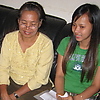

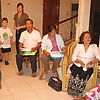
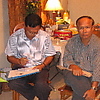
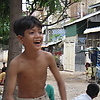
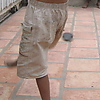

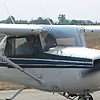
Fri, 12 Jan 2007
Safe and Remarkably Happy Arrival Twenty-four Cambodian SSTers arrived safe and happy at 5:10 p.m. this evening, with all of their luggage intact, and with the bus waiting. We're at our hotel now, and about half of the group is taking a swim as I write. Dinner is in 15 minutes.
Everyone seemed remarkably cheery and in good spirits, even after 52 hours of traveling. Amazing. Look for photos in about 30 hours after we've sent everyone home with their families. Tonight will be a comfortable one at the Hotel Scandinavia, with fish amok (a Cambodian classic) and fresh-squeezed lime juice on the menu.
Sat, 13 Jan 2007
Orientation and Greeting Cambodian Host Families We had a whirlwind 24 hours of welcoming students at the Pochentong Airport, whisking them off to our hotel in a hyper-full bus (see photo), having a fish amok meal, hearing from Mennonite Central Committee service worker Elijah Penner about living with a host family, and then heading to bed relatively early. Joanna, Jonny, and Isaac had enough energy late Friday evening to accompany Keith and Niles back to the airport to pick up 20 of the students' passports, which were delayed in being processed because of a minor immigration glitch.
Today (Saturday) we started with a Western and Cambodian buffet breakfast, then had 3 1/2 hours of orientation. As part of that morning session, Medic Gloria Christie gave a brief presentation on "staying healthy in Cambodia" (see photo). For lunch we walked to nearby restaurants, breaking up into groups of three or four so we didn't overwhelm any restaurant with our crowd of 29. In one of the photos here you can see Jonny, Paul, and Jesse enjoying ice coffees at a Thai restaurant. This afternoon we took a two-hour tour of the city, dropping Kelli off at her family's home on the city's southwest side. Other students watched with great anticipation from the bus as Kelli greeted the Van Ya family.
We returned to our hotel in time to meet other host parents, who came over the next hour and a half (see photo of waiting SSTers) to take home their new sons and daughters. Our Cambodian assistant Sreyhem did a wonderful job helping with the transition into families. Among the photos posted are Joanna and Anna greeting their related family members, Chhoy Socheata and Dyda Phoung; Nathan with his brother, with whom he immediately hit it off (twins separated at birth?); Nicole greeting her sister and her mother, Madame Vorn; Nathan and Sheldon headed to their homes in a tuk-tuk, preparing to go to the wedding of their brother and friend; and Krista greeting the Seak Botan family.
As of 8 p.m., 21 of the 24 students were settled into their new homes. For tonight, Jesse is ensconced at the Graber Millers, as planned, since his family was preoccupied with his sister's wedding this evening. Greg also is staying at the Graber Miller home tonight after having a rather nasty run-in with some sort of bacteria this afternoon. Don't worry, Mom and Dad Yoder; he's sleeping soundly right behind me here in the P'teah Goshen house's office. He's drinking his fluids and should be fine by morning. Janie is staying the night with Sreyhem and her family after we discovered this evening that her family situation had fallen through. With other families in the hosting pipeline, she should have a new family by tomorrow afternoon.
All of the students will be stopping by the Graber Millers' tomorrow as part of a map activity, and we look forward to hearing reports about their first night with their Cambodian families. They left for their homes smiling and in good spirits, putting to use their fledgling Khmer skills. They'll do just fine.
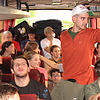
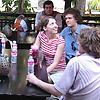
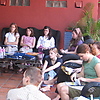
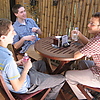
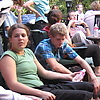
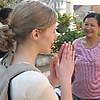

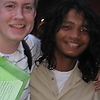
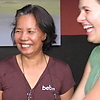
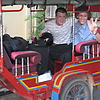
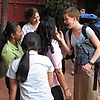
Fri, 19 Jan 2007
Academic Life at the Royal University of Phnom Penh After staying a night at the Graber Miller home, Jesse and Greg met their new families on Sunday, and they immediately settled comfortably into their homes. Janie had two nights at Sreyhem's house before she moved into her home near P'teah Goshen, with a family that immediately embraced her. By Monday night, all students were adjusting to their new environments and their new schedule, which includes daily classes at the Royal University of Phnom Penh.
Monday began with an official welcoming ceremony including University Rector Lav Chiv Eav and Academic Dean Ponn Chhay. Following the ceremony, each student underwent Khmer language testing, in front of their peers, with the four teachers. Here you can see Nicole, Seth, and Dustin being grilled by the teachers.
In other photos from the Rupp campus, teachers Pantha, Phara, and Sophea work with their six students in their classrooms during the 9 to 11:15 a.m. class; Ann, Jonny, Kelli, and Melanie enjoy lunch at the outdoor cafe behind RUPP's main building; and students take a break between class and their afternoon lectures. This week we learned about Cambodian peoples and cultures, politics, and the classical Angkor period (9th to 13th centuries) in Cambodian history.
(This is the first of three blog entries posted this evening, so please take a look at all three.)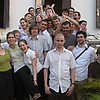
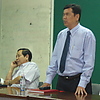
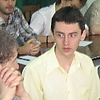
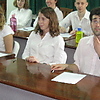
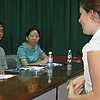
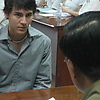
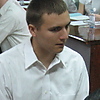
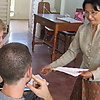
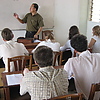
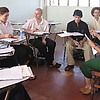
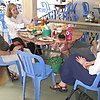

Group Gatherings, Decisions on Transportation, and Service Sunday afternoon students found their way to P'teah Goshen to report on their first nights with families. Students also returned for the first regular P'teah Goshen Night. Each Wednesday night the entire group will be at the Graber Millers for hymn-singing, reflection on their experiences, and comfort food. This week the group opted for loads of salad (we bought a kilo of lettuce), a fresh fruit salad, cheese sandwiches, and Oreos.
Sleeping arrangements for students vary, with about half of the group sharing beds or bamboo mats with a brother or sister. About half of the group sleeps on mats on the floor, and the other half has some form of bed or mat on a wooden platform.
Students report loving their families' food, which always includes rice, sometimes has one form or another of noodles, and often has coconut milk or curry ingredients.
On Thursday some of the students met Keith at one of the many local bike shops to purchase used bikes for their local transportation. Isaac, Tim, Krista, Dustin, Nicole, and Anna all will be riding bikes to school and lectures. Other students opted to go with tuk-tuks and sometimes motos, although they are religiously wearing their helmets when on two wheels.
On some mornings, Keith has been continuing to work at service placements, keeping students informed about what placements may emerge. Friday he met with the personnel director of Rehab Crafts, which creates functional wooden art and bags crafted from former fish-food sacks. All of the craftspeople have one form or another of disability, mostly from stepping on landmines. Two students may be placed in a small wood-carving village and two might work with silk weavers. In both cases, as in most provincial placements, villages will not have electricity. Among Rehab Crafts' customers is Ten Thousand Villages. Ann also has helped some with photographing items for Ten Thousand Villages at Rehab Craft Cambodia.
(This is the second of three blog postings this evening, so please take a look at all three.) 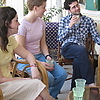
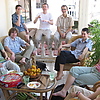

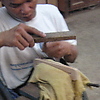
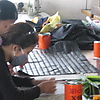
Visiting the National Museum and Royal Palace Friday afternoon, after the morning Khmer class, the group took a field trip to the National Museum and Royal Palace. The museum includes prehistoric artifacts from 6,500 B.C., when hunter-gatherers first lived in the area around contemporary Battambang. Featured throughout the museum's later displays were both Buddhist and Hindu images. Buddhism was present in Cambodia in the early centuries of the Common Era, but was replaced by Hinduism during the classical Angkor period. Buddhism became dominant once again after a later Angkor king embraced Buddhist philosophy.
Photos were not allowed inside the museum, so all of the photos here were taken in the courtyard. Pictured are Greg resting on a bench outside the museum; Kelli and Melanie joking as they view the stone figures, with Melanie trying to sketch some of what she is observing (including an exhibition of Rodin's sketches of apsara dancers); Janie, Laura, Abigail, and Krista chatting after completing their tour of the museum; and Simon and Keith in the museum courtyard.
We next visited the National Palace, which included a majestic throne room and the famous Silver Pagoda, with more than 5,000 pure silver tiles covering the floor. In the photos here you can see the group in front of a building housing the footprint of Buddha; Colin looking like a bug in his new sunglasses; Krista in front of the royal waiting room, where kings rest before mounting an elephant for their coronation; the two Lukes with young monks they met on the palace grounds, and then engaged in a half-hour conversation; Melanie, Kelli, and Jesse enjoying sodas; groups of students lined up on a curb taking a break from the heat; Nathan and Seth clowning around in front of the Silver Pagoda; and Abigail, Laura, Jonny, Janie, and Nathan on the steps before others from the group arrived for the full SST photo.
Since this is the "cool" season, temperatures have been in the upper-80s and low-90s. Some Cambodians wear jackets in the frigid weather. Our cultural informants tell us this season will end soon, and the heat will be ratcheted up considerably as we move into February and March.
(This is the third of three blog entries posted this evening, so please take a look at all three. Thanks.)
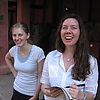
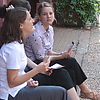
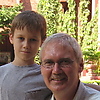
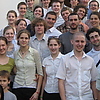

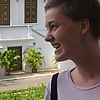
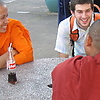
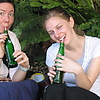
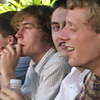
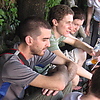

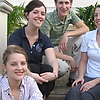
Wed, 24 Jan 2007
Sovanna Phum, Some Illnesses, Men's and Women's Nights Out, and P'teah Goshen Over the weekend the SST group, accompanied by about 30 host family members, attended a performance by Sovanna Phum, a small dance troupe. Pictured here are some of the drummers, as well as Nicole showing her cousin her journal, Nathan with his Mom, and Hillary and Nicole dancing with the troupe following the performance.
As is common in any sort of cross-cultural experience, we've experienced some minor illnesses during our time in Phnom Penh. Ann and Keith have been running a little clinic at P'teah Goshen (Goshen House), with the Graber Millers providing nurturing care that includes cool water, rehydration packets, crackers, toast, and loads of empathy. Thus far, with assistance from MCC's Sherry Groff, who is a nurse, we've not needed to send anyone to a clinic.
Over the weekend we also had Men's Night Out and Women's Night Out, going to separate restaurants with most group members, except those who were away with siblings. Luke (Luke Srey here) and Dirk were able to spend the weekend in the countryside with Luke's family. Luke's Dad was attending a class reunion of friends, many of whom hadn't seen each other since before the Khmer Rouge period (1975-79). Pictured here as part of Men's Night Out are men waiting at Independence Monument; Dustin in front of the Cambodian flag; Tim biking beside a tuk-tuk to the restaurant; and the men at each end of the table. We'll post Women's Night Out photos at another time.
Students continue to enjoy their host families very much. As pictured here, Jonny's family eats dinner together on a bamboo floor mat. In the next photo, you can see Jonny's bed in the middle of the living room at his home. Tuesday evening, after a cousin moved out of the house, Jonny moved into his own room.
P'teah Goshen, our weekly group event, continues to be a place for rich reflection and processing of group members' experiences. Wednesday evening we discussed the material we have been immersed in this week, primarily concerning the Khmer Rouge. (We'll post another entry about these lectures on the weekend.) Pictured here are two of our lecturers, So Na and Elijah Penner, who came to speak about a group called Women Peacemakers. At P'teah Goshen's Wednesday evening sessions, we also eat foods considered odd in Cambodia: tonight it was pancakes with various toppings as well as sliced vegetables.
Another event this week for Ann and Keith was meeting one of Ann's cousins, Julia Snyder, along with her husband Hans. Julia and Hans have been living in Germany for 25 years, and Ann and Julia had not seen each other since they were teenagers. Julia found the Cambodia SST blog online while she and Hans were touring Cambodia and made a contact through the website. It was a delightful evening of conversation and excellent Cambodian food.
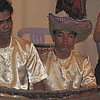
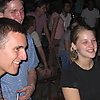
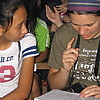
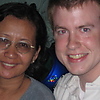

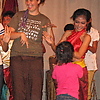
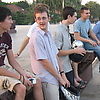

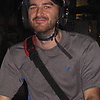
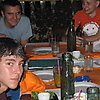
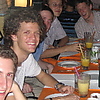
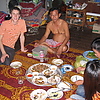
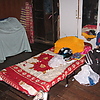
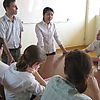

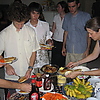
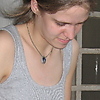
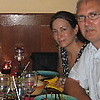
Sat, 27 Jan 2007
Remembering the Khmer Rouge: A Cambodian Tragedy Over the last several days Cambodia SSTers learned about the horrific events of the Khmer Rouge period that took place between 1975 and 1979. About two million Cambodians died during what our host families usually call the "Pol Pot years," which began in full force when the Khmer Rouge captured Phnom Penh in April 1975, then evacuated the city and put everyone to work in agriculture. Anyone known to be educated was killed -- professors, physicians, nurses, people who spoke English, those who wore glasses -- as well as thousands of people who had worked for previous governments. In all, about 2 million people were either killed or simply died from starvation or untreated illnesses during those tragic years.
Lectures included one by Ly Vanna about Cambodia in its Southeast Asian context, which focused on Thailand and Vietnam's response to the Khmer Rouge era. Dara Vanthan and Dacil Keo of Document Center-Cambodia also gave an excellent introduction to the Khmer Rouge years, placing the regime in its historical context and addressing the Khmer Rouge's ideological rationale.
All SSTers also interviewed their parents, grandparents or others over 40 to ask where they were from 1975 to 1979, how they survived, how many family members they lost, and whether they would like to see the Khmer Rouge top leaders brought to justice. The stories, told in student journals, were markedly poignant, moving, and powerful, each one more amazing than the previous one. One of the students likely will collect and edit the accounts for a possible PinchPenny Press book.
We took three major Khmer Rouge-related field trips this week as well. Wednesday we visited Tuol Sleng, a short walk from the Goshen House. The former school was turned into the S-21 detention and interrogation center from 1975 to 1979, and some 17,000 people were processed there before they were killed. No one escaped from the prison, and only a literal handful of people ever survived after entering its gates. Here you can see students seeing the torture rooms, viewing photos of those killed, and reading the signs posted on the grounds.
The second field trip was to the Extraordinary Chambers in the Courts of Cambodia, a Cambodian and international court where the "top leaders and those most responsible" for the Khmer Rouge killings will be prosecuted over the next three years. United Nations representative Peter Foster showed us the grounds and talked about the preliminary phase of the trials. To this point, nearly all of the top Khmer Rouge leaders, except for those who died, are living freely in Cambodia. One lives in a large home down the street from Isaac. Students discussed extensively what "justice" might mean in this context, and wrestled with questions of how to prevent future genocides.
Friday the group visited the Killing Fields, the somber grounds where thousands of Cambodians were killed by the Khmer Rouge. A stupa at the site contains the skulls of about 8,000 of the dead as a sacred memorial. Eighty-six of the 129 mass graves have been excavated. Among the photos are students walking through the Killing Fields, children playing near the fences that demarcate the grounds, and Sheldon taking a photo of bones and shards of victims' clothing that continue to be revealed on the path visitors walk.
SST Director Tom Meyers also visited from Thursday evening through Monday morning. Here you can see students relaxing on the RUPP campus during their break, and chatting with Tom and Cambodian RUPP students.
This will be a full week with lectures and field trips, including a major excursion to Angkor Wat and Kampong Phluk. The next blog posting probably will be Monday or Tuesday, February 5 or 6. Students are healthy, engaged, and increasingly immersed in the history, culture, and psyche of Cambodia and its remarkable people.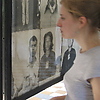
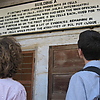
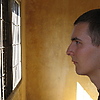

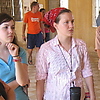
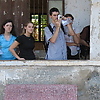
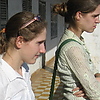
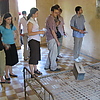
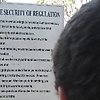


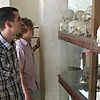
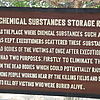
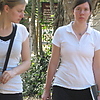
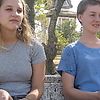
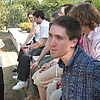
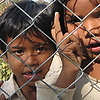

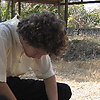
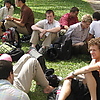
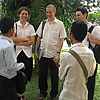
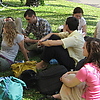
Sun, 4 Feb 2007
P'teah Goshen, Rehab Crafts, and the Super Bowl As I'm writing this, most of the Cambodian SSTers are here at the Goshen House watching the Super Bowl, which has been showing live since 6:30 this morning. We managed to postpone Khmer language classes for an hour this morning to allow for this odd American ritual.
Last week, on the night before we left for our four-day field trip to Siem Reap (see subsequent entries later today), we had P'teah Goshen at Friends Restaurant, an eatery run entirely by former street kids. Last Tuesday we also went to Rehab Craft Cambodia, an NGO that serves many other NGOs with crafts made by Cambodians with disabilities, most of whom lost limbs due to landmines. In the photo of bag-making, the workers were filling an order for Ten Thousand Villages -- 1,500 of the handbags made from fish feed sacks. Two students will do their service assignments at one of Rehab Craft Cambodia's weaving villages. In the final photo, you can see one of students' primary modes of transportation around town, the moto. The first photo includes several SSTers on the RUPP campus as we prepared for our Angkor field trip.
As time allows throughout the day, we'll be posting a host of photos from Angkor Wat, Siem Reap, and Skuon. 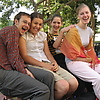

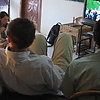
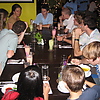

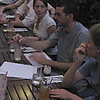

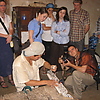
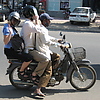
Mon, 5 Feb 2007
Exploring Siem Reap and Angkor Wat Last week we spent several remarkable days in and around Siem Reap, located about six hours from Phnom Penh near the Tonle Sap Lake. The Angkor temples were as magnificient as we imagined them to be. The classical Angkor period dates from the 9th to the 13th centuries, when much of Southeast Asia was ruled by kings located in this Khmer capital. Many of the major temples, including Bayon, with its 217 likenesses of its maker, were built by the "Donald Trump" of Angkor kings, Jayavarman VII, who lived in the 13th century.
Students woke up at 4:30 a.m. Friday to take the group bus to Angkor so they could catch the sunrise. After arriving 45 minutes early, they stumbled around in the dark until they saw the spectacular dawn rising behind Angkor Wat, the centerpiece of the Angkor temples. The group (29 of us in all) broke up into smaller sub-groups and then took tuk-tuks or electric bikes from temple to temple over the 30 to 50 kilometers on the temple grounds. Keith, Niles, and Mia all had minor accidents with their electric bikes, but suffered nothing more than relatively minor cuts and bruised legs, arms, and egos. Students survived the day without any incidents.
As is evident in the photos, we took a cue from Asian tour groups at Angkor and took a series of "jumping" pictures, which have much more energy than the stand-and-shoot versions.
While the city's primary features are the ancient temples, we also enjoyed an afternoon visit to the Artisans d'Angkor, a non-governmental organization that trains villagers for a year, then sends them back to their home areas so they can teach other artisans their crafts. Students spent time relaxing and journaling around the pool at our hotel, too, and enjoyed dining out in some of Siem Reap's Cambodian and international restaurants.
(See also the following entry on Kampong Phluk and Skuon, two other sites we visited on this field trip. That blog should be posted within the next 12 hours or so.)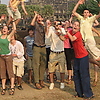
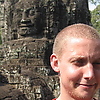

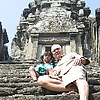

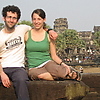

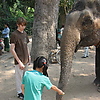
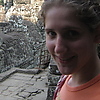
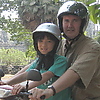
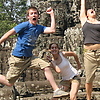
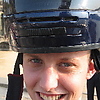
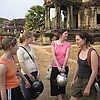
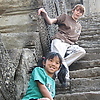
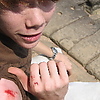

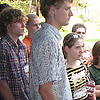
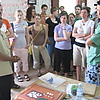
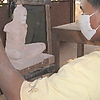

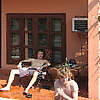

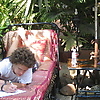
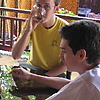
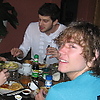

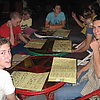

Visiting Kampong Phluk, the Land Mine Museum, and Skuon (Spiderville) On our Siem Reap field trip, in addition to seeing the majestic temples of Angkor (see previous entry), we also spent a day traveling to Kampong Phluk, the village on stilts. It was an adventure, with our bus driver first taking us as far as the vehicle could manage the roads. At that point we secured 16 motos on the spot, generating much excitement in the small, rural community, and motoed the six kilometers out to boats. We negotiated to rent three boats to take us the remaining 20 minutes to Kampong Phluk.
Since we're now in the dry season, much of the water beneath the Kampong Phluk homes was now gone, leaving only a winding river through the village. We first moved directly through the community, seeing fishing boats, scores of caged crocodiles, floating pig stys, and boat-homes. We went on out into the Tonle Sap Lake, which in the dry season is about 250,000 hectares in size. In the wet season (June to October), the lake swells to four to five times its original size -- up to 1.3 million hectares -- taking up a substantial portion of the Cambodian land mass. Another phenomenon during the wet season is that the Tonle Sap River, which runs through Phnom Penh and into the South China Sea, reverses directions and flows upstream into the lake; few rivers in the world experience such a phenomenon.
On the way back through Kampong Phluk we stopped for an hour on dry land, walking through the village, taking a moment to dance with the locals who were celebrating Meak Bochea, a Buddhist holiday, and spending half an hour talking with Buddhist monk Sorei, whom two students will tutor in English as part of their service project in the village. The students also will teach in the school where Sorei teaches English.
That afternoon a number of us went to a Silk Fair in downtown Siem Reap, and others of us went to the Land Mine Museum on the edge of town. Started by Aki Ra, a former Khmer Rouge child soldier who shouldered his first gun at age 10, the museum houses thousands of landmines and other weaponry Aki and his associates have cleared from the Siem Reap area. Dustin, who knows more about armaments than other group members, served as an excellent tour guide, explaining the function of each type of weapon. Seeing the collected bullets, bombs, and mines was quite sobering, as was seeing several of the people working at the museum who had lost limbs to mines over the years. At the Land Mine Museum's exit we were pleased to see a peace pole identical to the one on campus in Goshen and at many churches, schools, and offices around the world.
On Sunday's return trip, we made a stopover in Skuon, also known as Spiderville. This is the village where locals sometimes eat deep-fried, large, furry spiders for breakfast, lunch, and dinner, a practice that apparently dates to the Khmer Rouge period when food was scarce. A surprising number of SSTers took the plunge and ate all or parts of cooked spiders, and other brave souls allowed the living spiders to crawl on their backs, arms, faces, and hair. That gave others of us the willies.
We're happy to be back in Phnom Penh now with our families, and look forward to the routine of regular morning Khmer classes and afternoon lectures.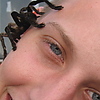
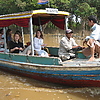

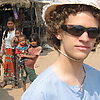
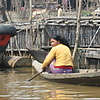
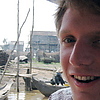
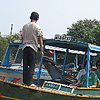
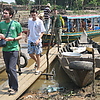

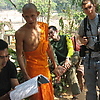
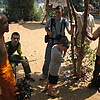

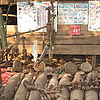
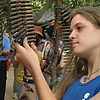
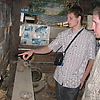
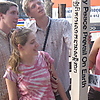


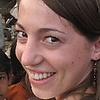

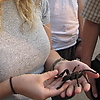
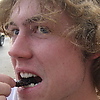
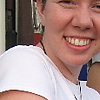
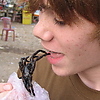
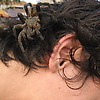
Mon, 12 Feb 2007
Explorations at Kep/Kaeb After a week of stimulating lectures back in Phnom Penh, the group headed off to Kep/Kaeb to examine the impact of tourism on Cambodia's economy and eco-systems. And to swim at the beach. And to eat fresh fish, shrimp, and squid, which our families had highly recommended.
Kaeb, the former top beach spot during the French colonial period (1863-1953), was decimated by the Khmer Rouge, and now colonial homes stand decaying and empty all along the beachfront. A few of these are being made into hotels, but far fewer tourists visit this area than Sihanoukville, a city 1 1/2 hours west of Kaeb. Sihanoukville, now Cambodia's port city, was carved out of the western jungles by the French and U.S. after the Mekong Delta was given over to Vietnam in the 1950s as part of Cambodia's independence agreements.
After settling in at our hotel, we headed almost directly to Rabbit Island, a small land mass where 20 families eke out a living by serving freshly caught seafood to backpackers and others who venture out to the island on fishing boats. Rights to the backside of the island were recently sold to a Taiwanese corporation that will build a huge casino to attract a different form of tourist.
We spent most of the day relaxing, eating and then eating more, reading, and playing along the shore. The seafood was extraordinary, the day was warm and sunny (as it has been every day here thus far). Later that night much of the group enjoyed some late-night frivolity in the Gulf of Thailand before returning to the hotel to sleep. We returned both refreshed and exhausted Sunday evening after a night at the hotel, walks along the seashore, and exploration of the region. Back in the city, the "cool" season is nearly over, and temperatures are cranking up. 


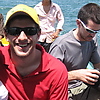

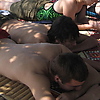

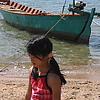
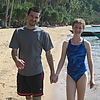
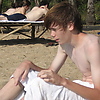

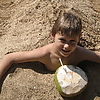
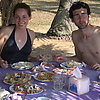
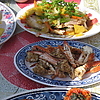
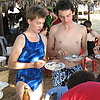

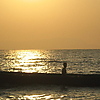
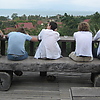
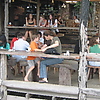

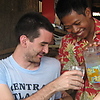
Wide-Ranging Lectures Over the Last Two Weeks Lectures over the last two weeks have been rich with information and provocation, as we've heard from many leading voices in Cambodia. As Church World Service director Josephine Barbour said at the beginning of her Friday presentation, which she did with Pastor Paulerk, "Many people would be envious to sit where you are sitting and hear from this collection of remarkable people."
Barbour and Pastor Paulerk finished off last week's set of afternoon presentations, speaking about the Christian Church and Christian Missions in Cambodia. A quite small percentage of this Buddhist country has converted to Christianity, and for service three students will work with Church World Service to survey all of the churches of the Kampuchea Christian Council. Charoeun Pa started off our week with his presentation on Developing a Distinctive Cambodian Philosophy. After that we heard from Venerable Yos Hut Khemacaro (see photos) of Wat Langkar. The session was at the wat, one of the few in Phnom Penh that survived the Khmer Rouge period. Khmemacaro also led us in a brief time of meditation.
Wednesday afternoon we traveled to the Royal University of Agriculture and heard about contemporary agricultural practices, ethical and developmental tensions, and research. The tour was led by Dr. Vattana, a 26-year-old German-educated professor, and one of the brightest and most articulate young Cambodians we've encountered in our lectures. MCC service worker Doug Graber-Neufeld helped organize the visit to RUA, where he also teaches in the biological sciences. Thursday's lecture took place on a boat that serves as the offices of Womyn's Agenda for Change, an activist organization that works for the rights of garment workers, who make only $45 per month to make many of the brand-name labels we wear in the West (check your clothing to see), and also the rights of sex workers, who serve both Cambodian and tourist clientele. Several current sex workers, organizers of a sex workers union, also were on hand to speak passionately to the group from their perspective.
On Monday afternoon of this week, Kek Galabru, founder and president of LICADHO, another human rights organization, spoke equally passionately about violations of human rights, corruption, and land-grabbing.
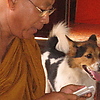
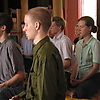
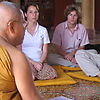
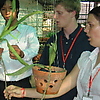
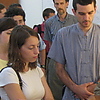
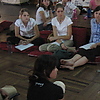
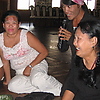
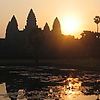
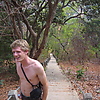

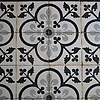
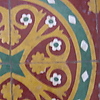
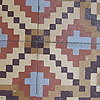
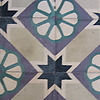
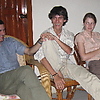
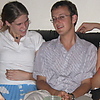
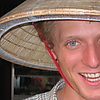
Sun, 18 Feb 2007
Weekend Village Studies Friday morning students left in small groups for their village studies. These overnight trips, long a staple of SST, are intended to give students confidence about securing tickets and traveling in the provinces to prepare them for their service assignments in rural areas.
Tim, Seth, and Janie went to Prey Veaeng and ate sparrows for the first time; Luke Nofsinger, Abigail, and Krista were in Kampong Spueu; Jesse, Jonny, and Kelli were in Takeo, where other students will be placed on service; Anna, Colin, and Dirk went to Kampong Cham; Nicole, Melanie and Greg were in Kampong Chhnang; Dustin, Laura, and Nathan were in the beach town of Sihanoukville; Joanna, Isaac, and Luke were in Srae Ambel, where other students will be on service; and Hillary, Paul, and Sheldon were in Odeng. All returned with lots of stories to tell. Monday afternoon students gave brief reports about their village studies during the time slot regularly scheduled for lectures.
The photos here are from Jesse, Jonny, and Kelli's trip as well as Paul, Hillary and Sheldon's village study. The images are representative of the Cambodian countryside and of the experiences of their peers as well. Most students visited Buddhist wats/pagodas along the way, and several even opted for countryside haircuts.
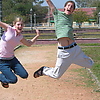
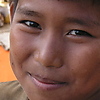

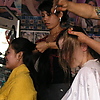
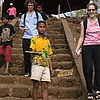
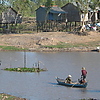

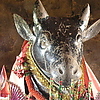
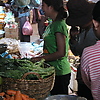

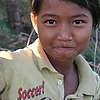


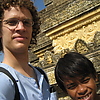
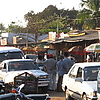
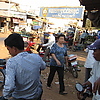
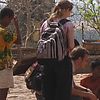
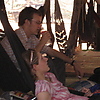
Mon, 19 Feb 2007
Thanks-Giving Dinner with Our Cambodian Host Families Sunday evening all students and representatives of their families were part of a celebratory dinner event at the home of Sreyhem Roberts, our local family coordinator. About 120 people attended the afternoon and early evening event, which included a Khmer meal of satay and noodle soup served in the tranquil setting of Sreyhem's back lawn. The party was a way of thanking our families for their gracious hosting during this first half of SST.
Students did a short program of introducing themselves and their families, singing several hymns, and then talking about their planned service work and locations. Since many families have relatives in the provinces, they were very interested in knowing where students would be living.
Sreyhem has been of invaluable assistance in setting up the families and trouble-shooting along the way. We're so grateful for her work in hosting this culminating event for the Phnom Penh portion of SST as well.
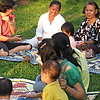
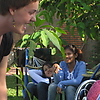

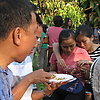
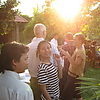
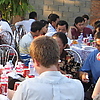
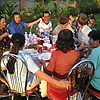
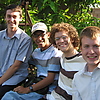
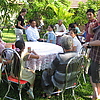
Celebrating 20th Birthdays for Joanna and Sheldon Monday we celebrated 20th birthdays for both Sheldon, whose birthday isn't actually until February 27, when he is out on service, and Joanna, whose birthday came during village studies. Joanna's celebration was a group event during the afternoon lecture period, and that evening Sheldon's family planned an almost-impromptu event, inviting the entire group.
Fifteen SSTers and the Graber Millers showed up for the full meal celebration for Sheldon. The event included short speeches from his parents, who lovingly refer to Sheldon as Visel, the name they would have given their third son if they had had one. Dinner included noodles, curry, and dessert, plus ceremonial cutting of the cake and shooting loads of silly string around the house. By the end of the party, most of the neighbors were standing at the door observing the festivities, too.
When not celebrating birthdays, students continue their regular two-hour Khmer classes each morning, and spend time at the Royal University of Phnom Penh campus. Last week's lectures included sessions on human rights, land issues, Youth for Peace, Cambodian holidays, and the Return Integration Support Program (RISP). The human rights and land lectures gave us a sense of the complexity of contemporary issues in Cambodia. Youth for Peace was a hopeful session, with high schoolers and young adults speaking with us about their involvement in peace workshops in Phnom Penh and the provinces. RISP helps American-Cambodian people who have been deported get reintegrated into Cambodian society. After September 11, 2001, the United States began deporting people from many countries if they were not citizens and had been convicted of felonies. Nearly all of RISP's returnees were babies or infants when they left Cambodia, usually as refugees during and after the Khmer Rouge period. While granted "permanent residence" status in the U.S., they were never given citizenship. Reintegrating into Khmer culture is difficult when their national identity is more American than Cambodian; many of the returnees speak only a few words of Khmer.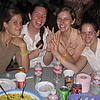
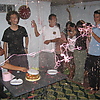
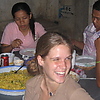
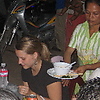
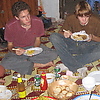

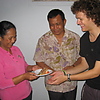
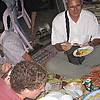

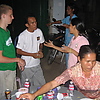
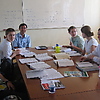
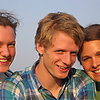
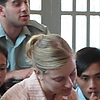
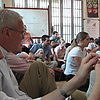
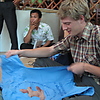
Fri, 23 Feb 2007
Final Week of Classes, Departure for Service Assignments We just completed the final week of language and cultural study in Phnom Penh, and students headed out for the far-flung provinces Friday morning. One student is here in Phnom Penh working with a women's shelter, others are within an hour of Phnom Penh, and some are as far away as 12 hours by direct transport (not public transportation). Within a day or two we'll post an entry detailing the specifics of these service assignments and locations. The Graber Millers remain in Phnom Penh along with five students who had preliminary work to do in the city (survey preparation, essentially) before heading out to their sites Monday.
Language classes continued each morning throughout the past week, with great incentive for learning whatever tidbits could be gleaned yet. Most provincial families will not speak any English. Afternoon sessions included Monday's Village Study reports, Tuesday's apsara dancing performance, Wednesday's session with Mennonite Central Committee workers, and Thursday's final group processing before heading out for service. The final P'teah Goshen Night featured taco salad, oreos, and ice cream, and was prepared as always by a group of students. During the evening, four more members of the group filled out visa extension forms. At this point, 15 of the 24 will be remaining somewhere in Asia for a week to three months after the SST experience finishes April 10.
Included here are a number of photos of the apsara dancing event at a rural Cultural Center outside of the city. We were greeted with a clapping tunnel reminiscent of opening convocations and commencement ceremonies back on campus. Children who are trained to do apsara and folk dancing live in the area or are orphans living at the center whose parents died of HIV/AIDs. They were extraordinarily talented.
Following the performance, we interacted with the children on stage, following their lead in the various dance steps, which involve delicate movements of the hands.
Mennonite Central Committee workers, including Larry Groff and Doug Graber-Neufeld (both pictured here) as well as their Cambodian and ex-pat colleagues in the local office, spoke with us about MCC's history in Cambodia. MCC, one of only two organizations to stay in Vietnam throughout the Vietnam War (known here as the American War), was one of the first five non-governmental organizations on the ground in Phnom Penh just after the Khmer Rouge period. Students were impressed with the work of MCC here, which has gradually shifted over the last quarter century from relief and more direct running of social services toward a consulting role that helps train, empower, and encourage Cambodian nationals. Doug Graber-Neufeld, an MCC service worker who is working at the Royal University of Agriculture while on leave/sabbatical from Eastern Mennonite University, also trained the group in doing water-testing. Two students will be testing water sources in Svey Rieng Province as their service assignments, and all students took testing kits to their sites to teach their families and communities about safe(r) water.
By the end of the week, students were ready to shift their energies to the next phase of SST. More on that within a couple of days. The final photo pictures Melanie Antram opening her mail. We've come to call the period of handing out letters "Melanie Antram's mail time" because of the amount of mail she receives. Families and friends should feel free to continue sending letters over the next few weeks, and Keith will deliver these when he visits students at their sites.
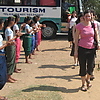
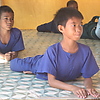
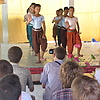
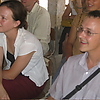
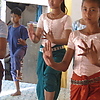
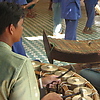
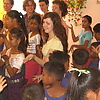
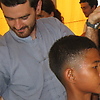
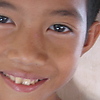
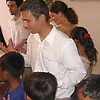
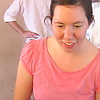
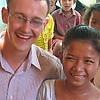
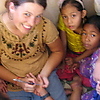
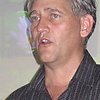
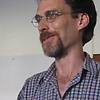
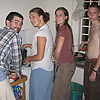
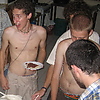

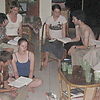

Mon, 26 Feb 2007
Service Assignments Begin in the Provinces Most Cambodia SSTers left Friday for their service assignments, and the remaining five departed Monday for the provinces. A handful of students are within a three-hour drive of Phnom Penh, but others are spread to the most distant corners -- all four quadrants -- of Cambodia. All have arrived safely and are settling in with few hitches.
Anna and Abigail are living in a weaving village in Takeo province, about an hour southwest of Phnom Penh. They are learning to weave and accompanying the women and men who make their livelihood selling their silk fabric and scarves to stores and NGOs, including Ten Thousand Villages. Abigail's aunt and uncle, Mennonite Central Committee's Sherry and Larry Groff, will visit them this weekend. Dirk and Sheldon (officially celebrating his 20th birthday today, February 27) are in Srae Ambel working with Khmer Ahimsa, a Buddhist-run peace organization that works with Buddhists, Christians, and Muslims. They will be accompanying their Cambodian hosts and learning about land-grabbing, reforestation, and other issues that affect people in Koh Kong Province, relatively near the southwest coast and Thai border.
Laura is the only student working in Phnom Penh, just a few blocks from the Graber Miller house, at a women's organization known as Hagar. She'll be doing a research project related to women in prison, and is living with a new host family; her mother also works for Hagar. Mennonite Central Committee service workers helped make arrangements for the service assignments for Luke N. and Melanie, who are about 2 1/2 hours northeast of Phnom Penh in Prey Veang town. Melanie is teaching English at a school and Luke is teaching guitar at a Youth Center in town. Keith will see them already this Thursday, and then again in March.
Nathan is one of our other solo placements, working in a quite remote setting in Prey Veang Province and teaching guitar and English. Guitar-teaching is mostly for local church people, and the English teaching is mostly for Buddhists in the area. Dustin and Tim are at the greatest distance, some 12 hours away in Rattanakiri Province. They are living in villages with indigenous/tribal people, and accompanying them in their daily work. They report that their food consists of rice and whatever they've been able to forage from the forest or streams that day -- fish, cashews, vegetables, whatever. On their first weekend they spent a full day "fishing," which meant rerouting a stream, then bucketing all of the water out until the fish were all lying on top of the muddy ground.
Greg and Jesse are in Kampong Phluk, the stilted village the entire group visited on our trip to Siem Reap and Angkor Wat. They are teaching English to the monks in the village, and also teaching English to elementary children. Hillary and Kelli are working through Church World Service in a research and editing assignment. They are spending three weeks in Kampong Thom, one week in Malai , which is north of Battambang, and then two weeks in Phnom Penh completing their writing and editing. The reports they are revising and editing have to do with health care and de-mining projects in these areas.
Paul, Luke K., and Jonny also are working with Church World Service in a research project, visiting the 75 congregations in the Kampuchea Christian Council. Although their home base is here in Phnom Penh, they will travel across the entire country interviewing pastors and calling together focus groups. Even before the first six weeks were over, they were having regular meetings with CWS officials and devleoping a survey that will glean hard data and theological perspectives from their interviewees. They also will do at least two mini-conferences for pastors on basic Christian theology. They'll sleep in homes and churches while they are on the road.
Seth, also in a solo assignment, is serving at a school outside of Battambang, up in the northwestern part of the country. He is teaching taekwondo (already has 200 students signed up) and English, if there is time. Nicole and Joanna are in a village near Takeo, not far from the weaving village where Anna and Abigail are. They are working with weavers, vegetable-growing, reforestation, and other agricultural projects in their area.
Krista and Janie spent the weekend completing a survey instrument here in Phnom Penh, then left for Ponhea Krek in Kampong Cham, near the Vietnamese border. They are developing a research project on human trafficking (children and adults sold into the sex trade or sold to garment factories) for World Relief. The project will serve as a pilot for further World Relief research on this issue. Their base is in Ponhea Krek but they will travel to outlying villages each day. And, finally, Colin and Isaac are working through Church World Service on a water-testing project in villages in Svey Rieng Province, again near Vietnam but tucked into the far southeast corner of Cambodia. Roth Laboratories in Goshen contributed 350 water-testing kits that the Graber Millers brought with them in December; Colin and Isaac took 250 of these to their site, and other students took the remaining 100 to their villages. CWS is excited about the potential for transforming lives through showing people what water sources are healthier than others.
A few students are living in block homes, while most are in wooden homes, sometimes on stilts. Bathroom and bathing facilities vary; some have indoor facilities with squat toilets, some have outhouses, and several have no bathroom or outhouse -- only bushes for bathroom needs, and buckets of water for bathing outdoors. Nearly all students took with them inexpensive, locally made water filtering systems produced by one of the non-governmental organizations here, and when they return to Phnom Penh they will leave behind those purification systems for their host families.
Nearly all of the students are pictured here in their groupings, and some as they were headed out to their sites. The photo of the living room loungers is from Saturday night's slumber party at the Graber Miller home for those who remained in the city over the weekend. The evening included five hours of conversation and a late-night movie.
Keith is able to make cell phone contact with most of the students through their provincial contact person. He and Niles will begin visiting group members this week, going first to Prey Veang and then spending most of the next four or five weeks on the road. Keep those cards and letters coming for a couple of weeks yet -- they take about two weeks to arrive in Phnom Penh. In this period when many students don't have access to email, they'll be happy to see mail from home.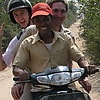
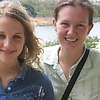
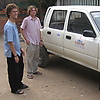

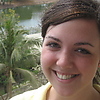
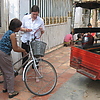


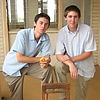
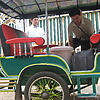
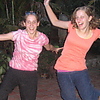
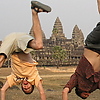
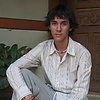
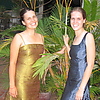
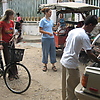
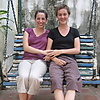
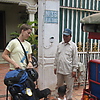


Sat, 3 Mar 2007
Service Update I: Prey Veang, Takeo, Kampong Phluk, CWS Research Project, and Phnom Penh This week a number of students called in to report how life is going in their villages, and Keith and Niles visited with Melanie and Luke Nofsinger in Prey Veang; Jonny, Paul, and Luke Kreider, who were in and out of Phnom Penh; and Laura, whose assignment is here in the capital. Niles also visited Abigail and Anna outside of Takeo, accompanying MCC Directors Sherry and Larry Groff on their visit to their niece, Abigail.
Luke and Melanie seem well settled into Prey Veang, a mid-size town near the Vietnam border. Mennonite Central Committee had service workers in the town in the 1980s and 1990s (including John and Danielle Martens, parents of current Goshen student Elijah), but only recently re-established a presence there. MCC workers helped locate the placements for Melanie and Luke and have breakfast with them each day.
Luke's family lives near the border of a large, open field, so the view from his room is expansive. He has several brothers, parents, and a grandmother at the home, as well as cows and chickens wandering about the family's eating area below the house, which is on stilts. His primary work is at a local Youth Center, where he teaches guitar to interested students each afternoon.
Melanie sometimes goes to the Youth Center, too, and teaches some basic English there. Later in the afternoons Melanie teaches classes of high school or university-age young people in a school started by a former Londoner who has settled in Prey Veang. As we biked down the town's streets, students of both Melanie and Luke greeted us warmly.
Melanie's home also doubles as a canteen for local university students, so about 25 college-age men and women come for lunch and dinner each day. As in Luke's case, the extended family all sleeps on a slatted bamboo floor in the home's large, open, essentially unfurnished room. Both Melanie and Luke seem to have made the adjustment to service quite well.
Jesse and Greg report that they're also enjoying Kampong Phluk, the remote village near Siem Reap that is accessible only by boat. They teach English lessons twice a day at the local school run by Buddhist monks, and will also begin giving language lessons to Sorei, a monk who was our contact person in the village. They are living with the same host family near the school.
Anna and Abigail seemed to appreciate the visit from Abigail's aunt, uncle, and cousins as well as Niles. They are living in homes about 100 yards apart in a weaving village 30 miles south of Phnom Penh. They report that they are enjoying the food, and Larry and Sherry enjoyed interacting with their families. Thus far their work is limited, though they are learning how to make traditional silk scarves on the enormous looms in their homes. Anna and Abigail will take their one weekend break here in Phnom Penh March 16-18.
Luke, Paul, and Jonny were in and out of Phnom Penh throughout the week as they began their survey of the 70-some churches of the Kampuchea Christian Council. They spent a few days in Kandal Province to the southeast of Phnom Penh, and then had meetings at Church World Service here in the city. They also did some of their survey revisions and report-writing here at the Graber Miller house, and accompanied Keith and Niles out for dinner a time or two, including last night's meal with Laura Leischner, whose assignment is in Phnom Penh. Jonny and Paul also took a free afternoon to pick up their custom-made, tailored suits at the Russian Market.
The survey trio will be out in the field from today (Sunday) through next Saturday, and then will return for two nights of recuperation before heading out again for a long week of interviews, focus groups, and sleeping in homes and churches in the provinces. They travel with one of Cambodia's leading pastors, Sar Paulerk, and with two Cambodian translators, whom they are learning to appreciate very much.
Laura's work consists of researching women in Cambodia's prisons, a project requested by Hagar International. She lives with a Hagar employee whose primary work is reintegration of women who have been trafficked into the sex trade. Last week she was able to travel to Battambang to reintegrate a young woman with her family. Right now Laura's work consists of reading reports and doing internet research on women in prison, and she hopes to have firsthand contact with interviewing imprisoned women.
Group members with internet access were deeply saddened to hear about the tragic accident of Bluffton University's baseball team, which went over an overpass in Georgia on the way to a Florida bout with Eastern Mennonite University. Many students no doubt have connections with some of those affected by the accident. Our thoughts and prayers are with all involved in or touched by this tragedy.
Keith and Niles plan to travel to Takeo to see Anna and Abigail as well as Nicole and Joanna, who are in villages nearer Takeo, on Monday and Tuesday of this week. From Wednesday through Saturday they'll be on the road to and at the tribal villages of Dustin and Tim in Rattanakiri, some 12 hours away from Phnom Penh. Look for another update about a week from now.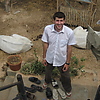
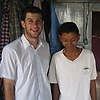
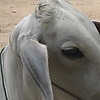

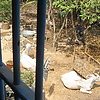
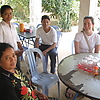
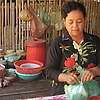
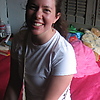
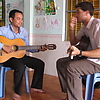
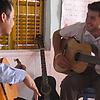
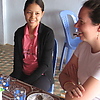
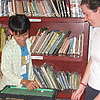
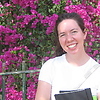

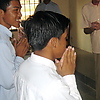
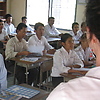





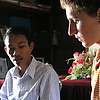
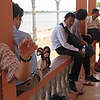

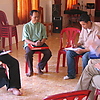
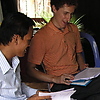
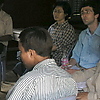
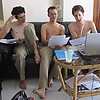
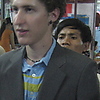


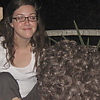
Fri, 9 Mar 2007
Service Update II: Takeo and Scattered Reports Niles and Keith spent Monday and Tuesday with Joanna, Nicole, Anna, and Abigail, the four women placed in weaving villages about 1 1/4 hours outside of Phnom Penh. The villages are on the way to Takeo, to the southwest of the capital, and are only about 18 kilometers apart on the main road (plus five to 10 kilometers each back through rice fields), but the two pairings had not yet found each other.
We first stopped in Preh Cuchia, Nicole and Joanna's village, accessible only by foot, bicycle, or moto through the three-foot-wide dams around rice plantation plots. Both are living at a rather relaxed pace, doing what their families do each day in this season when rice and vegetables are not growing. They eat lots of rice and also mangoes pulled straight from the trees. Both of their families are silk weavers, with looms below their stilted houses or the houses of other relatives next door. Takeo Province is where most of the silk scarves in Cambodia are made, so if you're fortunate enough to receive one from your returning SSTer, it likely came from this area.
Nicole's household is loaded with younger siblings and cousins from the neighborhood. Joanna's siblings are older so her home is a bit quieter during the day. We also spent time with Sunlove, Joanna and Nicole's supervisor. Sunlove, appearing here in the red shirt, works with CRWRC, the non-governmental organization that helped us arrange for this service location. Sunlove and Nicole's dad and cousin then took us by moto to Phum Pei, the village where Anna and Abigail are living.
Abigail and Anna live about 100 yards from each other, and once again their families are craftspeople. Abigail's mother works for Rehab Craft Cambodia as one of their premiere weavers of icat fabrics and also a purchaser for other area weavers. Icat is extraordinarily detailed tie-dyed fabric requiring days of preparation and finely knotted threads. Both Anna and Abigail are learning to make scarves with their families. They also take walks through the village, visit with their families, and assist with daily chores. Abigail lives alone with her sister/mother and many other relatives next door, and Anna lives with her parents and several older siblings. Their homes and surrounding areas are filled with cows, chickens, and other livestock wandering in and out of the loom spaces. For all four women almost no one in their villages speaks any English, so their Khmer language skills are being stretched. These are idyllic settings, and wonderful locations for service.
Monday evening we came back into Phnom Penh with the foursome. We had dinner out together at a rooftop restaurant, then the women slept in P'teah Goshen's spare beds for the night. After Keith finished reading their journals in the morning, they headed back out to Takeo, feeling a bit refreshed and prepared for the remaining four and a half weeks of their provincial assignments.
In other reports, Seth appears to be enjoying his 200 taekwondo students at his school outside of Battambang, in the upper northwest. Luke, Paul, and Jonny spent most of the week in Svay Rieng Province, interviewing dozens of pastors in rural churches. They were back in the capital for the latter part of the week preparing for one of their theological mini-conferences next week. Dirk and Sheldon came into the capital on Wednesday as well, and will spend a week here attending meetings at Khmer Ahimsa, their NGO contact, and living with their Phnom Penh host families. Greg and Jesse continue their work in Kampong Phluk, teaching English a couple hours each day. Niles and Keith will leave Sunday morning for their visit to the stilted village where Jesse and Greg are living.
Krista and Janie also are returning to Phnom Penh today (Saturday) with their NGO counterparts, spending today through Monday here in meetings. Nathan, who is placed alone in a remote village where no English is spoken, also is returning today to spend a bit of time with English speakers.
Colin and Isaac report that they are working long days in Svay Rieng Province, testing water in different villages each week. Their placement is with Church World Service, as are several of the other placements, including the assignments for Kelli and Hillary. Hillary and Kelli report that about two-thirds of their service work involves research on de-mining. They've conducted more than a dozen interviews with de-miners and beneficiaries of de-mining in Kampong Thom, and will be doing more interviews there and in Malai, where Church World Service has not yet begun de-mining.
Thus far everyone is reporting good health in their service settings. With nine SSTers in Phnom Penh this weekend, we'll be having a sleepover tonight (Saturday), and then everyone will head out mid-morning Sunday so Keith and Niles can leave for Siem Reap. 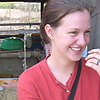
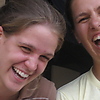

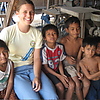

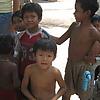

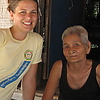
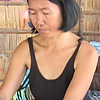
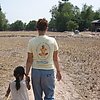
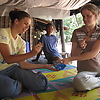
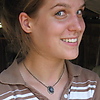
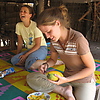
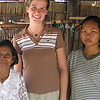
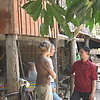
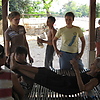
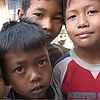
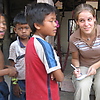
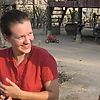
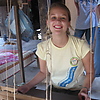
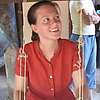
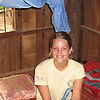
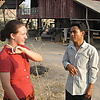
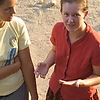
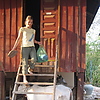
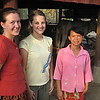
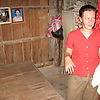

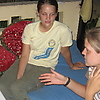
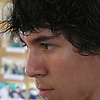
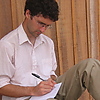

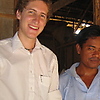
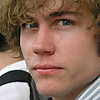


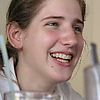
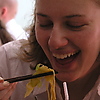
Sat, 10 Mar 2007
Service Update III: Rattankiri Province Dustin and Tim, who are living an 11-hour, bone-jarring drive from Phnom Penh, are embedded in indigenous villages in Rattanakiri Province. Keith and Niles visited them on Wednesday through Friday this week, returning to Phnom Penh Friday evening.
Tim lives in L'oun Chang village with a Tampoun family, while Dustin lives a half-hour away, down red-dusty trails, in Dongrrabpoo village. Dustin's parents and community are part of the Kreung. Each of these villages, tucked away in the hilly forest, consists of 25 to 30 bamboo-constructed homes. Bathing happens in springs hundreds of meters from their homes, and toilets are designated brush areas in the communities. The settings are awe-inspiring -- exotic in nearly every way.
Both Tim's and Dustin's families do subsistence farming, growing rice and even more so now cashews; they eat the former and sell the latter in nearby Banlung, the provincial capital. In this dry season, villagers' days are spent weaving chicken coops, baskets, or traditional fabrics; fishing; collecting bamboo for local construction; gathering cashews; observing the unusual dietary habits of the community's wandering pigs; and felling trees for local use. Dustin has spent several days helping his parents collect cashews from their plot half a mile from his home, and other days assisting with cutting hardwood trees being used for lumber for the village's school. He's clearly in his element in Dongrrabpoo, and enjoys learning some Kreung language while teaching English to the villagers several evenings a week.
While 90 percent of Cambodians are Buddhist, in Rattanakiri Province the majority of chunchiet (nationality) people are animist. Animists are deeply spiritual, with a sense that spirits or souls inhabit all parts of the natural world as well as human beings. Recently Tim was awakened in the middle of the night, to the sound of drumming, to see a lunar eclipse. When he emerged from his home he saw small fires throughout the village warming his community members as they thumped on gongs, drums, troughs, and other items, helping the moon through its transition. The scene was mesmerizing.
Keith, Niles, and Gordon Patterson, the Australian non-governmental worker who assisted with placing Dustin and Tim, first went to Tim's village Wednesday evening. We ate with Tim's very gracious family and then went to a village meeting at which elders and other community members were discussing their commitment to preserve the bamboo forest that is part of their land. They agreed to talk with all of the families who access the forest to ask them to preserve the bamboo for the community's use, and not for selling beyond the village; the decision will allow the bamboo groves to be sustainable for many generations. The meeting was conducted in the Tampoun language, and it felt like holy space, a world rarely entered by outsiders. The import of their decisions that night were significant.
After the night at Tim's house, where we all slept on the planked floor in the one-room home, we took motos to Dustin's village. Dustin led us through his community, where we met the village chief and saw the cleared land where the new school will be built. We then took a two-hour hike into the forest, up and down hills and through a marsh, to see where the trees are being cut for the construction process. Later that day we motoed to Yeak Laom Lake, part of the sacred land managed by the Tampoun. We swam in the crystalline water for a couple of hours before settling in for dinner in Banlung and then a late night at Gordon's home.
On Friday, as Niles and Keith headed out, Tim and Dustin were leaving for an annual gathering of the Highlanders Association. The event is considered a cultural exchange, with each tribal group sharing some of its customs and dances with neighboring groups. Rarely are non-chunchiet invited to participate, but Tim and Dustin were able to be present for the all-night event, which crescendoed at dawn Saturday morning.
As for all Cambodia SSTers, Tim and Dustin will have many stories to tell when they return. Niles and Keith leave tomorrow (Sunday) for Kampong Phluk, where they will see Greg and Jesse. After a night back in Phnom Penh they'll head out to Kompong Cham to observe Luke, Paul, and Jonny as they do a theological mini-conference for pastors. They'll move directly from there to Ponhea Krek to check on Janie and Krista and their research project on human trafficking near the Vietnamese border. Next weekend, if plans carry, Keith will visit Nathan in his remote village in Prey Veang Province. Good times.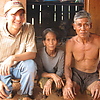
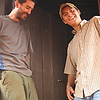
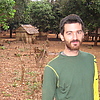
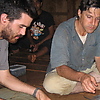
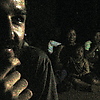
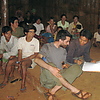
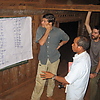
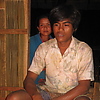
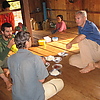
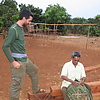
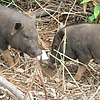
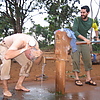

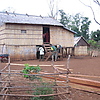
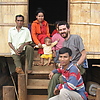
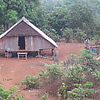
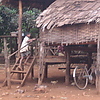
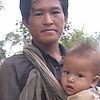
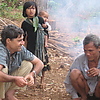
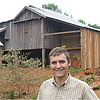
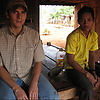
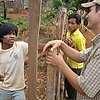
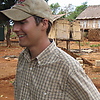
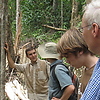
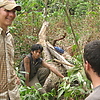
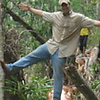
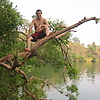
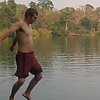
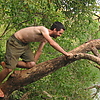
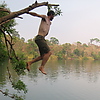
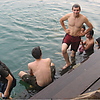
Wed, 14 Mar 2007
Service Update IV: Kampong Phluk Jesse and Greg are back in Kampong Phluk after four days away from the village completing their official registration process. In many post-Communist countries, the presence of foreigners in villages needs to be officially registered and monitored. Two weeks ago Greg and Jesse had met with their village chief and the village police officer, but on Saturday they were taken by the district police to Siem Reap, told they needed to meet with the governor on Monday, and then left at a guesthouse.
Keith and Niles arrived Sunday afternoon with some official paperwork, and collectively we tried to meet with the provincial governor at several points Monday. While waiting, we treaded water (sometimes literally) at the Green Garden Guesthouse, where the group stayed on our trip to Angkor Wat. Finally, on Tuesday morning, we received official approval, complete with 11 governor-signed letters to be distributed to provincial, district, and commune officials. Jesse, Greg, and Keith headed for Kampong Phluk immediately afterward, dropping off letters at appropriate offices along the way.
Greg (or Kira, as he has been rechristened in the village) and Jesse are living with a mother, two sisters, a nephew, and three 20-something teachers (Cambodians) who also are working at the local school, which is just across the street from their home. Their mother whipped up a quick and delectable meal for us the afternoon we arrived. Jesse and Greg sleep on a mat on the front porch, where you can see them reading and writing in some of these photos. They've been out on the Tonle Sap Lake a time or two; helped their families select fish for eating; played with the neighborhood children; and read extensively. They teach English about two hours each day at the school run by local monks, including Sorei, our contact person there.
It's a quiet life in Kampong Phluk, much as it is in other villages. Now, in the dry season, you can ride motos all the way to the village -- no boat necessary. That reality seems to have increased the number of tourists coming through the village. While we were chatting with the village police officer, a Scandinavian couple walked over, and seeing that we looked pretty comfortable and settled, said, entirely in jest, "Are you living here?" Greg and Jesse said, "Well, yes," which brought about a look of shock and disbelief.
Keith and Niles returned home yesterday afternoon (Wednesday), and Keith leaves today (Thursday) for Ponhea Krek, where Krista and Janie are living. He'll be in Memot on Friday evening and Saturday morning at the theological mini-conference. Last weekend nine members of the group, including Krista and Janie, Laura, Nathan, Dirk, Sheldon, and the Church World Service researchers were in town for the weekend or more, mostly attending meetings. We also had a slumber party at P'teah Goshen Saturday night. Next week Keith hopes to make it to Nathan's village; to Battambang (Seth); and to Malai (Kelli and Hillary). He won't make it to see Dirk and Sheldon and Colin and Isaac until the fifth week of service, as it looks now.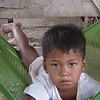
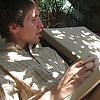

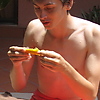
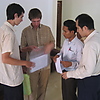
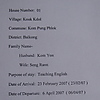
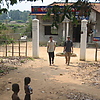
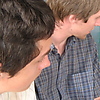
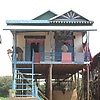
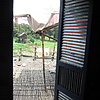

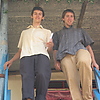
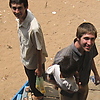
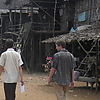
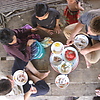
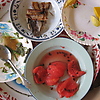
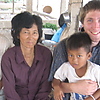
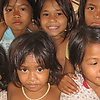
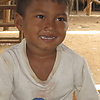
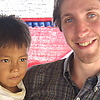
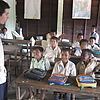
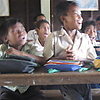

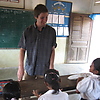
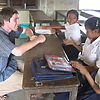
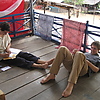
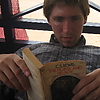
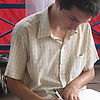

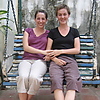
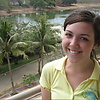
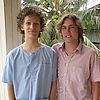
Sun, 18 Mar 2007
Service Update V: Ponhea Krek and Memout Working through World Relief, one of scores of NGOs in Cambodia, Janie and Krista are doing a pilot research project on human trafficking near the Vietnam border. They are living in Ponhea Krek, one of the crossroads into the neighboring country. Each morning the two conduct interviews with village chiefs, parents, and spouses of people sold or taken into the labor market and occasionally into the sex trade as well. Janie interviewed several women in the local brothel, and both Krista and Janie will interview other women in the sex trade in nearby Kampong Cham.
The women have heard powerful stories from people whose children have been taken to Thailand or Malaysia, from women whose sons and daughters have disappeared, and from women in the sex industry. They will continue their interviewing for two more weeks, then return to Phnom Penh to write a major final report for World Relief.
Janie and Krista are both living in the same household, a household of all women. Two of the women there they refer to as "Ma," one is an aunt (one Ma and an aunt are pictured with them here), and two are sisters. A third "Ma" works with them at the World Relief office. They have strong relationships at the office as well as at home, and are enjoying learning to know their Cambodian hosts. Together we took a walk through the surrounding countryside, stopping for breakfast the next morning in the local market.
Figuring you're never too old to learn something new, Keith rented a Honda dirt bike to take the four-hour trip to Ponhea Krek. Friday morning Krista and Janie loaded onto the back of the motorcycle for a trip an hour further from Ponhea Krek, to Memout. Luke, Paul, and Jonny were doing a one-day theological conference there, and we were able to sit in on these sessions.
The three did an impressive job speaking to and hearing from the 13 pastors in attendance. Their focus was on "Being the Church in the World Today," with an attempt to link theology and ethics more closely. They built on learnings from their extensive interviews with pastors across Cambodia. The threesome concluded the conference by providing a fresh interpretation of the biblical "submission" passages, using the issue of domestic violence to illustrate how the church could be more faithful to God's calling for Christian husbands and wives. The conference also included a good bit of small-group processing and interaction with the pastors. Pastor Sar Paulerk, a well-known Cambodian pastor and Church World Service employee, provided some of the translation for the conference.
Hillary and Kelli report that they've finished doing research for their helath report. They interviewed more than 20 people, mostly women, on birth control, breastfeeding, and water sanitation in rural Cambodia. They left Kampong Thom and headed to Malai over the weekend. Keith will see them in Malai, near Battambang, this coming Thursday. Seth continues to enjoy his 150-ish taekwondo students. He teaches four classes on Mondays, Wednesdays, and Friday, and two classes on other days. He also spends time each week with the school's teachers, teaching educational psychology.
Luke, Melanie, Paul, Luke, Jonny, Abigail, and Anna all were in Phnom Penh over the weekend, and five of the seven stayed at P'teah Goshen for a slumber party. Luke celebrated his 21st birthday with his Phnom Penh family, and also attended a Buddhist carnival in Kampong Thom.
Keith heads off on the moto in a few minutes for a quick overnight visit to Nathan's village, and then will be back one night before heading to Battambang to see Seth, Kelli, and Hillary. 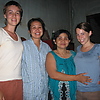

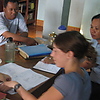
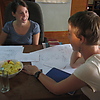
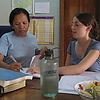
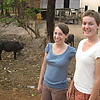
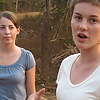
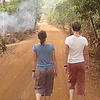

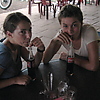
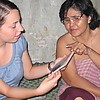
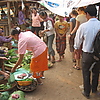
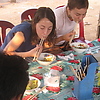
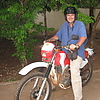

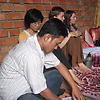

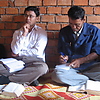
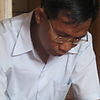
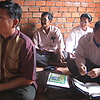

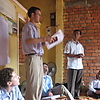
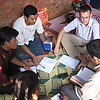

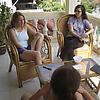
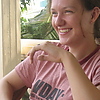
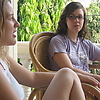
Mon, 19 Mar 2007
Service Update VI: Deep Rural Prey Veang When Keith arrived in Nathan's tiny village Sunday evening, all he could muster to say was, "Bless you, my son." Nathan lives deep in rural Prey Veang Province, near Svey Rieng, the province to the south. National Highway 1, the road in Nathan's direction, is in the process of being completely refurbished to make more efficient trade possible with Vietnam. After leaving Highway 1, it's two hours of unpaved, increasingly narrowing (and harrowing) dirt and sand roads, with cattle and goats and dogs crossing every several hundred meters and unmarked, washed-out sections of roads. The final leg of the journey is on a moto-tire-wide rut, with two-feet drop-offs on either side into the rice fields, complete with 90-degree twists and turns. Keith developed mounting respect and admiration for Nathan as he completed the 5 1/2 hour sojourn.
The small community where Nathan lives is nestled in a stand of tropical trees, surrounded all around with hectares of rice fields as far as the eye can see. The small community of interrelated families includes many Christians, though Nathan's family is Buddhist. He has about five brothers and two sisters, although precise numbers are hard to ascertain with people coming and going, and neighboring children spending time at the house. Four generations live in the house, as is typical in many Cambodian homes. As for many other students, his home is essentially a one-room place, with bamboo slatted floors (see photos) to allow air to circulate in the house. One small bedroom is walled off near the back, with its exterior wall plastered with magazine photos of beautiful people.
Beneath the house is the kitchen/cooking area, as is usual for rural homes, and the family's cattle sleep there as well, chewing their cud throughout the night, audible through the open floor spaces immediately above. Roosters three feet away from the floor slats begin crowing at 1 a.m. and continue through the remainder of the night. The stars are beautiful, though, and the setting is idyllic.
Nathan spends many hours playing with his 10-month old and seven-year-old nephews, as well as other neighborhood children. Everywhere he walks he hears the Khmer equivalent of "Friend!" shouted at him. With limited Khmer language skills, and with no one (literally) speaking any English in his village, or within a half-hour of it, Nathan says he sometimes goes two full weeks without "a single intelligible conversation." Nonetheless, it's clear he has strong relationships with his family and his guitar students.
Nathan teaches guitar each day at 7, 8, 9, and 10 a.m., and then again at 1 and 2 p.m. The morning Keith was there Nathan began teaching at 6 a.m. to accommodate the students' schedules. Some of these lessons include two students at a time, and all are Christians wanting to learn to play for the church. Lessons take place in the pastor's home (see photos), which also doubles as the community's meetinghouse. The pastor (pictured with Nathan) and his spouse use a pedal-pump (see photo) to irrigate their vegetable gardens. They, like Nathan's family, use a car battery to power a single light, radio, or television since Nathan's village (true for many other SSTers, too) has no electricity.
Nathan's host father, who travels frequently, is the head of the Cambodian People's Party (the ruling party) for the district, and the family's walls include photos and a clock of him receiving an award from Hun Sen, Cambodia's prime minister.
Nathan's village is in the area of Cambodia where the U.S. conducted massive, secret bombing raids between 1969 and 1973, dropping more than half a million tons of high explosives on eastern Cambodia -- more than three times the quantity dropped on Japan during World War II. Nathan's family and others in his village are remarkably welcoming of Americans, given the country's history in the region.
Last month the U.S. began sending the first of several hundred Peace Corps volunteers to Cambodia as a way of "extending the compassion of our country to every part of the world," as President Bush said in a post-September 11 speech about doubling the size of the Peace Corps. Last month the U.S. also agreed to make available direct aid to Cambodia for the first time since the Khmer Rouge period of the 1970s. And in other news the same week, it was announced that massive oil reserves had been found off the coast of Cambodia, enough to produce hundreds of millions of gallons over the next several decades. Hmmmmmmm ....
Keith returned from Nathan's village Monday afternoon, spent the night at home, and then he and Niles left the following morning for the Battambang area to see Seth, Hillary, and Kelli. Blog updates for those visits will be posted within the next 48 hours.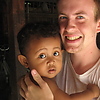
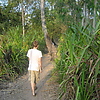
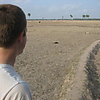

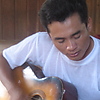
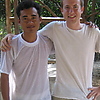
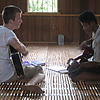
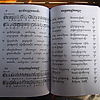
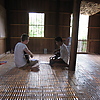
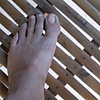
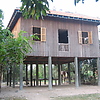
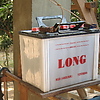
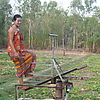
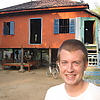
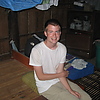
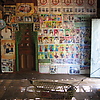
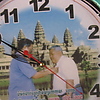
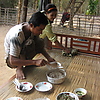
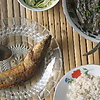
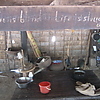
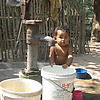
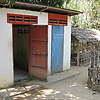
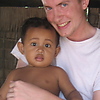
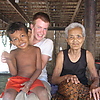
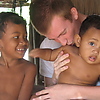
Sun, 25 Mar 2007
Service Update VII: Seth Outside of Battambang Seth is one of several SSTers doing a solo stint, without a student partner, in his service assignment. Others are Nathan in Mesang District (just blogged about) and Laura here in Phnom Penh (blog coming in 10 days or so). Seth's work is at a supplemental school that teaches English, art, music, and -- now that Seth is on site -- taekwondo. The 700 students who attend the school also attend public school either in the mornings or afternoons.
Seth's taekwondo courses were an immediate hit at the school, with somewhere between 150 and 250 students participating in one or more of the classes he teaches. He does taekwondo lessons, as many as four a day, every day of the week, and then also meets with the school's regular teachers to talk about educational psychology -- discipline, motivation, grading, and so on. The day that Keith and Niles visited, Seth was speaking about assessment; Keith also spoke with the group briefly about teaching at the college level. Seth teaches self-defense for the teachers as well.
Seth lives in a small house right on the school's campus, so he has children and teenagers around nearly all of the time. He eats his meals -- which he describes as extraordinary -- with a family directly across the street from the school. Keith and Niles had lunch with Seth's mom, sister, and two nephews, and he was right about the exceptionally good cooking in his household.
The school itself is located about 10 kilometers outside of Battambang, a path he walks regularly on the weekends. It was started by a Cambodian NGO in the founder's home district as a way of providing greater educational opportunities for children from the area.
Niles and Keith were able to watch Seth work with his youngest class of taekwondo students. He does an impressive job in his teaching, usually holding the students' rapt attention, and clearly being appreciated by them. Over the weeks he has learned how to say all of the taekwondo moves in Khmer, so the lessons are conducted entirely in Khmer.
Seth misses his regular taekwondo students back home, and looks forward to seeing them in a few weeks. But he's extending his teaching reach in this village outside Battambang, and his Cambodian students will long remember his work with them.
In other news, Hillary and Kelli returned from the field (see the next blog, to be posted within 24 hours) to write their reports in Phnom Penh. Hillary, Luke, Paul, Jonny, Laura, and Keith all participated in a Mennonite Central Committee hymn sing Saturday evening, the last one at MCC's present location. MCC will move into a new house this week, and Keith and Niles will move into the house's guest rooms by midweek since the owners of P'teah Goshen return this week. Nathan also was in town over the weekend taking a breather from his language- and culture-intense assignment. Keith will leave for Srae Ambel tomorrow to see Sheldon and Dirk, and then he'll see Isaac and Colin in Svey Rieng Province -- at the polar opposite end of the country -- immediately afterward. Keith still hasn't completed Laura's site visit since he's rarely in Phnom Penh during the week. But that will be coming within about eight days. 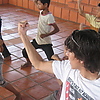
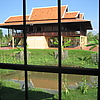
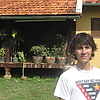

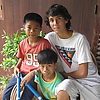

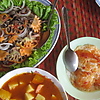
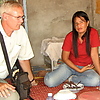
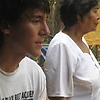
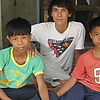
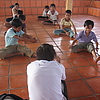
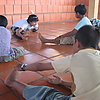
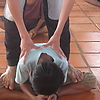

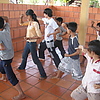
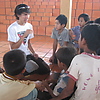
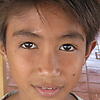
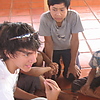
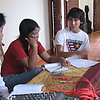
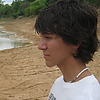
Service Update VIII: Kelli and Hillary Interviewing Near the Thai Border As Hillary and Kelli interviewed landmine victims and other locals in Malai District, near the Thai border, we could hear landmines exploding at regular intervals. Malai, said to be "perhaps the most landmined area in the world," is now an active de-mining site, with several non-governmental organizations working at ridding the fields and forests of the devastating mines left behind by the Khmer Rouge and their enemies. As Vietnamese invaders or liberators took over Cambodia in 1979, Khmer Rouge soldiers and their leaders retreated to the northwestern part of the country, where they maintained great power and control until about 1997, when fighting in the area ceased. They continued planting landmines, designed to maim rather than to kill since it takes more people to carry the wounded than bury the dead, throughout much of the 1990s.
Although Hillary and Kelli intended to interview landmine victims as well as people who had received livestock from Friends Economic Development Association (FEDA), a partnering organization with Church World Service, about half of the homes we visited along a single road had at least one landmine victim in the household. The powerful eruptions of mines, heard nearby as we talked with people who were missing a leg or foot, was quite discomfiting. One woman we spoke with said she was working for a neighbor, collecting beans, when she stepped on a mine about two years ago. She now has a prosthetic device where her foot and calf once were.
Kelli and Hillary are working on about four different field reports for Church World Service. In Kampong Thom they interviewed de-miners and landmine victims for one report. In that same town they interviewed a second set of women for a health and nutrition report. In Malai District, where they were for only one week, they interviewed about 25 people for two different reports -- one about those who had received aid from FEDA, and another about the possibility of further de-mining work in the area.
While in Malai District, the SSTers stayed in Banteay Meanchey, which is about an hour north of Battambang, which already is five hours outside of Phnom Penh. For their interviews, they traveled another two hours to Malai, which is right on the Thai border. We had opportunity to step across a bridge into Thailand for just a moment (see photos).
Hillary and Kelli returned to Phnom Penh on Saturday, and they are spending the remaining two weeks of service at the Church World Service headquarters writing their reports. They also may have opportunity to speak with CWS staff about gender issues, based on their learnings from their field work. Their assignment looks fascinating, as do most of the SST service placements this spring, and Hillary and Kelli are well-suited for the writing and editing projects.
In other reports, Luke, Jonny, and Paul finished their second theological mini-conference, this time in Kampot, near the south coast. They are interviewing pastors in the provinces this week and then will be back in Phnom Penh the final week to write their report. Krista and Janie will be back in Phnom Penh next week as well for a similar writing project, and Laura will continue her work here with Hagar. Sheldon and Dirk will be in Battambang later this week and then will be in Phnom Penh for several days before returning to Srae Ambel for the last two days of service.
Keith just returned from Srae Ambel this evening and will post a blog about Dirk and Sheldon tomorrow. We've had some delays in blogging because the electricity has gone out more regularly in recent weeks, due most likely to the city's overuse of air conditioning and fans as the heat intensifies.
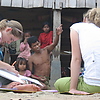


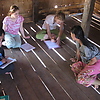

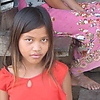

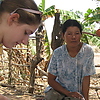
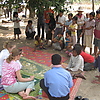
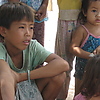
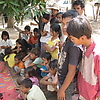
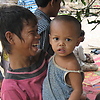
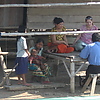
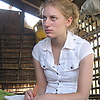


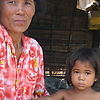
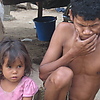

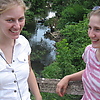
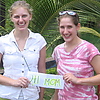
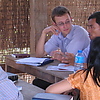
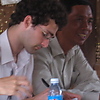
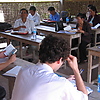
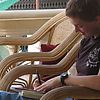
Tue, 27 Mar 2007
Service Update IX: Dirk and Sheldon in Srae Ambel Dirk and Sheldon are working with Khmer Ahimsa, an organization that promotes nonviolence and works at issues of oppression in Srae Ambel District in Koh Kong Province, near the west coast and the Thai border. The area has Buddhist, Christian, and Muslim residents, and part of what Khmer Ahimsa does is to get people of various religions to see their commonalities and work together. This happens in part through a series of "salabon" meetings, where community people gather under a wooden structure designed specifically for that purpose, a sort of "salon" for discussion.
Sheldon and Dirk have accompanied Khmer Ahimsa workers to a couple of the salabon meetings during their weeks in Srae Ambel. They also have done some editing of various documents for Vanna, the director of Khmer Ahimsa's programs, and on occasion they have "shadowed" other staff members as they have done their work. As is typical for many SST locations around the world, they also are having substantial time for hanging out and reading, plowing through more than a dozen books each.
On one of the days Keith visited Vanna was conducting a nonviolent training workshop for a number of local villagers. We had breakfast, lunch and dinner with various Khmer Ahimsa staffers, usually in either Dirk or Sheldon's home. Both families prepared feasts, with one meal including vegetable dishes as well as offerings with chicken, pork, beef, squid, and crab. Sheldon's parents are young, so he refers to them as his older brother and older sister, and he has a niece and nephew in the house as well. He goes by the name Visal in Srae Ambel as well as in Phnom Penh. Dirk's family is larger, with more activity around. Dirk's father, a former Khmer Rouge solider and then a soldier for the subsequent, Vietnamese-run government, now is a "keeper of traditions" in the community, which means he officiates at weddings, funerals, and other official functions. Three of Sheldon and Dirk's four parents are vendors in the local market, selling fruit or rice or repairing watches (see photos).
Sheldon and Dirk also have had time to visit a couple of local waterfalls and the beach, sometimes needing to take the ferry across various waterways (see photo). They had planned to go to Battambang this weekend to visit Seth and some newly made Cambodian friends who are going through an SST-like program, living with rural families for a period of time. They were struck by how much their urban Cambodian peers' experiences have been similar to their own. Because of Sunday's commune elections, though, they will not be traveling over the weekend. Most students will be staying put rather than being on the roads during what can be a tense time.
By this weekend, Hillary and Kelli, Krista and Janie, Jonny, Luke, and Paul, and Laura all will be resettled into Phnom Penh to complete their service assignment work. Sheldon and Dirk and Melanie are around for a couple of days, too, before returning to their sites. Krista and Janie had a good time with Tim and Dustin in Rattanakiri last weekend. Dustin and Tim will be leaving Rattanakiri a bit early since they didn't take their allotted weekend "off," and they'll be doing a bit of traveling before they return to Phnom Penh a week from Friday. This weekend Luke N. hopes to visit Nathan in his rural setting. Niles and Keith will be able to stay at P'teah Goshen through next Tuesday while MCCers get settled into their new building. Next Wednesday morning the Graber Millers will move into the new MCC house until the whole group goes to a hotel for the final retreat. The end of service and SST is in sight. Just two more service update blogs -- one for Colin and Isaac, whom Keith will see tomorrow and Friday, and one for Laura, coming next Monday.
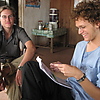
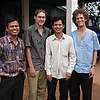
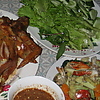
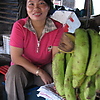
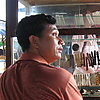

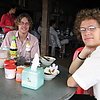
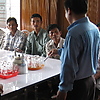

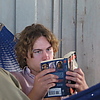
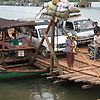
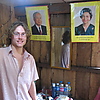
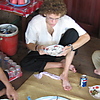
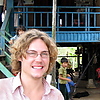
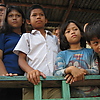
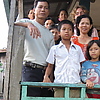
Sat, 31 Mar 2007
Service Update X: Colin and Isaac Along the Vietnamese Border Just when Keith thinks there can't possibly be areas any more remote than what he's already seen, another visit comes up that pushes the boundaries out further. Isaac and Colin's location was that sort of visit. After a three-hour bus trip to the provincial capital of Svey Rieng, Colin and Isaac's current service setting was another 2 1/2- to 3-hour moto ride, complete with a hand-pulled wooden ferry across one river (see photo), through forests and rice fields to the northern part of the province.
The two SSTers, who are working with Church World Service in a water/sanitation research project, have been moving their way up the Vietnamese/Cambodian border throughout the past five weeks, spending five days in a commune, then returning to the provincial capital for the weekend, then heading further north to another commune the following week.
Their process, facilitated by local CWS staffers, is impressive in nearly every way. On Monday mornings they meet with village chiefs in that commune, ask permission to test water in their villages, and arrange a schedule of which villages they'll visit on which day. When they arrive in a village, the chief calls the community together (usually from 20 to 60 people at a meeting) and then Isaac and Colin tell them what they are doing, ask about the village's various water sources, and ask whether they would like to have some of these sources tested for dangerous bacteria. The meetings are quite participatory and seem empowering, given that local people are identifying potential problems and making decisions about what should be tested. Villagers understand the basic concept of bacteria, and are aware that the bacteria can make them ill.
After determining what water sources should be tested and where, Colin and Isaac go with their Church World Service translators to individual homes, take water samples and ask more specific questions about the source. They also ask how frequently various members of their family have bowel or stomach illnesses or other water-borne diseases. They test ring wells, dug wells, hand pumps, and CWS-provided filtering wells in addition to the buckets where water is stored for some families. About 350 testing kits, created by Roth Laboratories in Goshen, were donated to SST by Jonathan and Maryann Roth and have been used not only by Colin and Isaac but by all of the SSTers in their various locations.
Two days after testing the sources, Isaac and Colin return to the village and meet with interested villagers to report their findings. Usually the hand pumps and CWS wells provide the most bacteria-free water. Concrete-ring wells are usually the next-best in terms of water purity, and dug wells almost always have significant amounts of e coli bacteria present. In some of the photos here, you can see results from a ring well, dug well, and hand pump, fairly typical for those three sources. The darker spots are e coli bacteria clusters. Colin and Isaac then talk about what people might do if their water looks problematic.
Over the course of their time in Svey Rieng, Colin and Isaac have tested about 200 water sources in a total of 21 villages in five communes. In many villages, they are the first Westerners villagers have ever seen. Keith was there when they were in Trass Commune, the northernmost village where they worked. In each commune they live with a different family, taking their primary meals with the family and usually sleeping on bamboo platforms. Two weeks ago they had their backs "cupped," a Cambodian procedure employing heated glasses that create circular bruises on the back and arms, purportedly for improved health; in one photo Colin shows what remains of the relatively painful procedure.
The entire area where they are testing water was heavily bombed during the American War (what we in the U.S. call the Vietnam War), with B-52s doing a secret bombing campaign for four years in Cambodian territory. The Viet Cong, whom we were fighting at the time, were sometimes hiding out in the forests along the border, areas that are now largely deforested through the slash-and-burn method to make way for rice fields. Although the U.S. never declared war on Cambodia, it dropped 150,000 tons of bombs on Cambodia, 50 percent more tonnage than was dropped on Japan during World War II. In one of the photos here, you can see Keith standing in a bomb crater left by one of the B-52s that flew so high they were invisible and inaudible, dropping 500-pound and 700-pound bombs on unsuspecting Viet Cong soldiers and Cambodian farmers alike.
Cambodia's governing system is set up by provinces, then districts within those provinces, then communes, then villages. Tomorrow, April 1, will be the country's second Commune Council elections, so political campaigns are in full swing. Although the Commune Council's five to seven elected representatives are the lowest level of elected government in Cambodia, the Councils are responsible for planning and implementing development projects in their areas. For indigenous groups and other small communities, they provide the only voice villagers have in politics and development -- the only chance they have to determine their own futures. Communes where the Councils are made up of people from the local villages have remained strong to resist the wave of illegal land grabbing and deforestation -- both orchestrated by large corporations in conjunction with corrupt government officials -- that are sweeping across the country. We pray that the elections will be peaceful, and that small villages such as those where students have been living and working will continue to be able to determine their own futures.
Isaac and Colin will spend the final week of SST service writing their cumulative report for Church World Service, and then they'll return to Phnom Penh with other SSTers next Friday. Coming next week: the final service blog, this time about Laura Leischner's project on women in prison.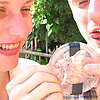

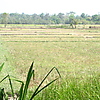
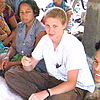
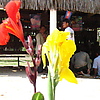
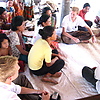


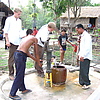
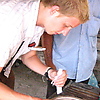
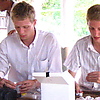
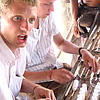
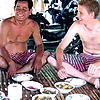
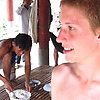
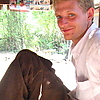
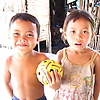

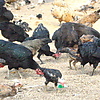

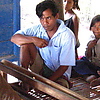
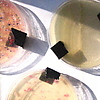
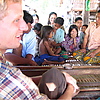
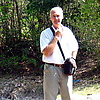
Tue, 3 Apr 2007
Final Service Update: Laura at Hagar in Phnom Penh Although her service placement and home are only a 10-minute walk from P'teah Goshen, Laura was the last of the 24 SST students to be visited. Keith saw her each weekend throughout service but was on the road much more than in Phnom Penh. Yesterday he spent most of the day and evening with Laura, her family, and her work peers.
Laura is working with Hagar, an organization that addresses the needs of "marginalized, destitute, and rejected women of Cambodia who represent the essence of Hagar's metaphor." Last month's Sojourners magazine included an article by Elise Elzinga, a Mennonite and current staffperson at Hagar in the communications department. Hagar's work is impressive at every level. The organization works particularly with trafficked women and women who are victims of domestic violence, with programs addressing the needs of the elderly and now women in prison as well. They also provide on-site schooling and daycare at their women's shelter and do extensive job training in domestic sewing, industrial sewing, cooking, beauty salon work, and weaving. They also run a soya milk factory and a green tea factory, both of which are designed to provide work for women as well as produce some modest income for the organization.
Each year Hagar "reintegrates" about 120 women who had been in the sex industry back into life in Phnom Penh or their home villages. Most women choose to remain in Phnom Penh because of work opportunities and the difficulty of moving back into their village settings. Hagar then provides start-up resources so reintegrated women can make a living, and has a two-year follow-up plan and support system. This is important work. Laura has been able to take three trips into the provinces to help with reintegrations or to visit women who earlier were reintegrated.
Laura's specific project for service has been to do research on women in prison for Hagar's newest initiative. About 380 women are in the prison system in Cambodia (compared with nearly 6,000 men). A couple of non-governmental organizations already work with men in prison, so Hagar is focusing on women's needs in the scattered prisons where they are housed. Laura did online research, visited LICHADO, a human rights organization, and visited the country's only prison exclusively for women and minors. Thursday she'll present her findings to all interested Hagar staff people. She'll be providing an introduction to Hagar's project, doing analysis of women in prison, and making recommendations for Hagar's work.
Laura also has had wonderful relationships with her family. Her mother, Chhorvy, works alongside her (literally) in the office at Hagar. After Chhorvy's mother died and her father, a former solider for Lon Nol's army, was killed during the Khmer Rouge years, she spent from about 1981 to 1993 in a refugee camp along the Thai border. She began working for Hagar the following year. Laura's father, who met her mother in the refugee camp, now is an administrator in one of the government's ministries. Laura sleeps in a room with her sister, Chenda (20). She spends many hours at home playing with her 8-year-old brother Simon, who was trying to teach her how to do apsara dancing the day Keith visited and who made Keith miss his younger children, who are now back in Goshen. Laura also has a 15-year-old brother, Rady.
Laura and Keith had lunch at Hagar's new bistro, where women trained to cook are able to put their skills to work. Laura, Keith, and Niles had dinner at the home of Milet, Hagar's women's programs manager.
Milet and Hagar would love for Laura to stay on another six months to implement some of what she has been researching. As for many SSTers, she may be inspired to come back after SST, to Cambodia or elsewhere, to do similar grassroots work with people who have been marginalized.
Students return from their service assignments Friday, and beginning Saturday will be meeting individually with Keith, sharing project presentations with the group, doing language testing, and processing their experiences. Nine SSTers will head home Tuesday, April 10, while the other 15 scatter to Thailand, Vietnam, China, and other parts of Cambodia.
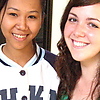
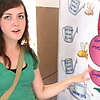
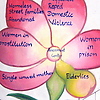

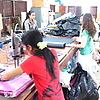

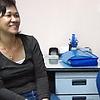

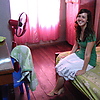
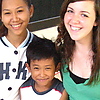

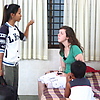
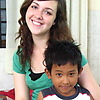
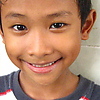

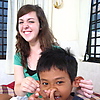
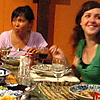
Fri, 6 Apr 2007
Safely Back in Phnom Penh The eight SSTers who were in Phnom Penh over the last week, writing final reports for their agencies, were joined by their 16 counterparts throughout the day today. All Cambodia SSTers are now safely ensconced back in the city, with their original host families. They will stay with their Cambodian hosts until 2 p.m. Sunday, when they will head to the same hotel where SST began.
Keith already began final interviews with students this week, and those will continue through tomorrow, along with project presentations. We'll be meeting on the open rooftop of the new Mennonite Central Committee offices, located just a few blocks from the old office. Reorientation has begun, and the end of the first Cambodia SST is in sight.
Mon, 9 Apr 2007
Reoriented and Ready to Roll Tonight (Monday) we finished our final reorientation process, after three days of project presentations, language testing, story-telling, and individual final interviews. The first day of this was on the roof of the MCC house, and then students returned to their host families for their final night before checking in at the Scandinavia Hotel. Tonight we brought closure to the experience with an informal gathering, with 25 people tightly squeezed into one of our hotel rooms. As I write this now, ten of the students are having a late-night social gathering 20 feet from the internet hookup in the hotel restaurant. It's an intensely warm night, following consistent days in the mid-90s, with humidity making the temperatures feel like about 110 degrees, according to the Weather Channel website.
Before 7 a.m. tomorrow (Tuesday) morning, five students will leave for Ho Chi Minh, Vietnam. Fifteen students will head for the airport at 9:30 a.m. Two of those -- Greg and Sheldon -- will break off from the group in Singapore and go on to Hong Kong and then to Chengdu, China. But thirteen people -- including four who until this afternoon had intended to stay longer in Cambodia -- will be returning to Goshen Wednesday. Their flight arrives in Chicago at 5:20 a.m. Wednesday, and they'll be picked up there by SST Director Tom Meyers, who will whisk them off to Goshen.
It's been a wild and wonderful ride with this extraordinary group of students, here in this remarkable country. Our hosts have been gracious, our learnings have been significant, and our journey has been, in so many ways, blessed (and we don't use that term lightly).
Thanks for traveling with us these three months through the blog and occasional emails and calls from SSTers. Your children, grandchildren, nieces, nephews, friends, and beloveds will be thrilled to see you, and they'll be brimming with stories. We hope you'll love listening to them as much as they've enjoyed experiencing SST in Cambodia.

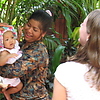
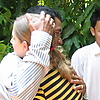
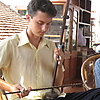
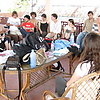
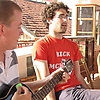
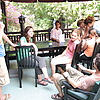
![]()
International Education Office
Kevin Koch
kevinak@goshen.edu
+1 (574) 535-7346